fall inside a hole
EF15 Electric Locomotive (1970)
First written September 20, 2023Expanded September 2025, October 2025
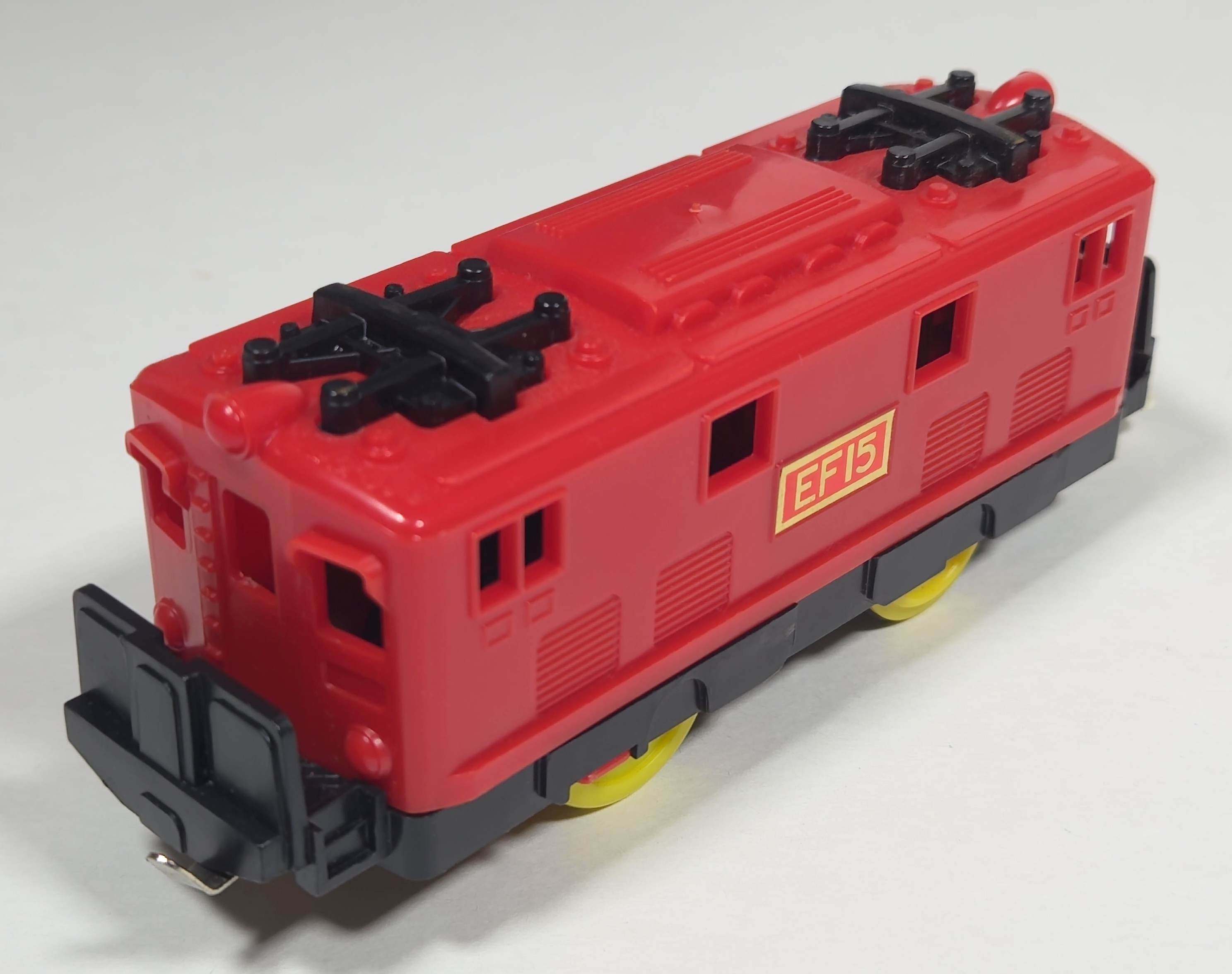

The EF15 was manufactured between 1947 and 1958. Over 200 were built and they remained in use until the mid 1980s on freight lines. The Plarail EF-15 was introduced in 1970 and was a regular release for the rest of the 1970s and also appeared in a long-lasting set in the 1980s. It disappeared from the range with the move to new power before reappearing with a modern gearbox in 2001.
Electric Locomotive (1970)



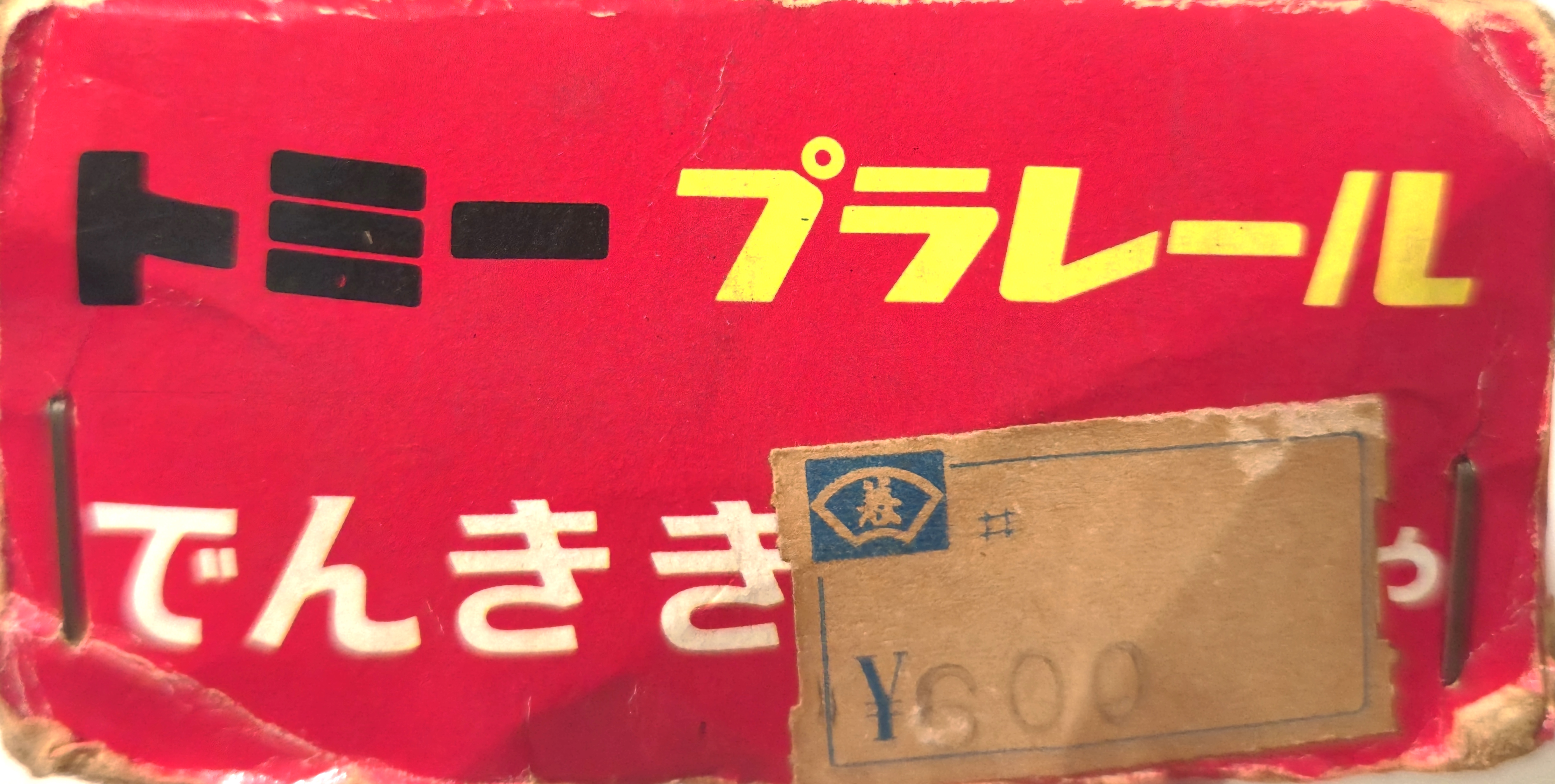

The EF-15 debuted in 1970 in the second generation of lift-top box as well as the Electric Locomotive Set. Being the only electric locomotive in the range at the time, it was simply called the Electric Locomotive (でんききかんしゃ).
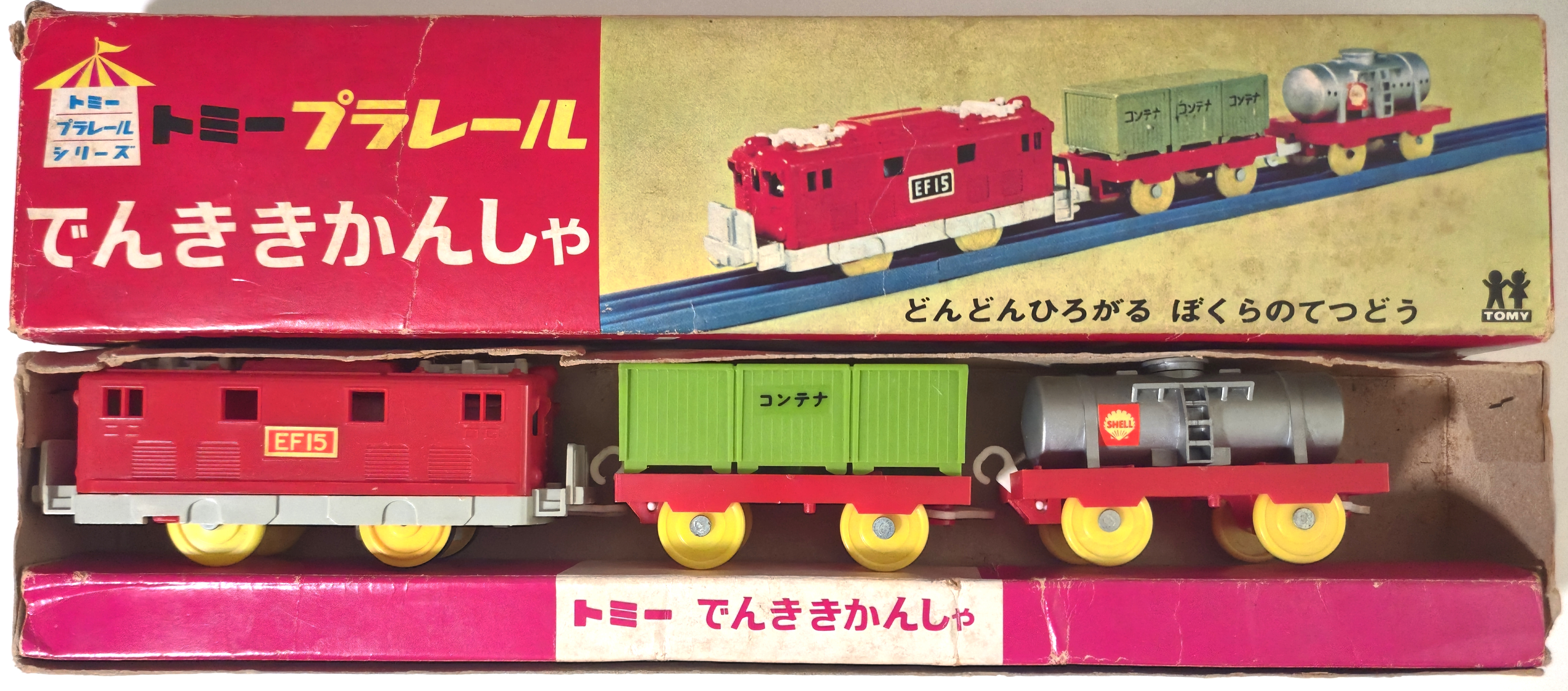
These lift-top boxes are rather flimsy, and it is kind of a miracle that any have survived... An additional cardboard platform supports the train inside the brown lower box.
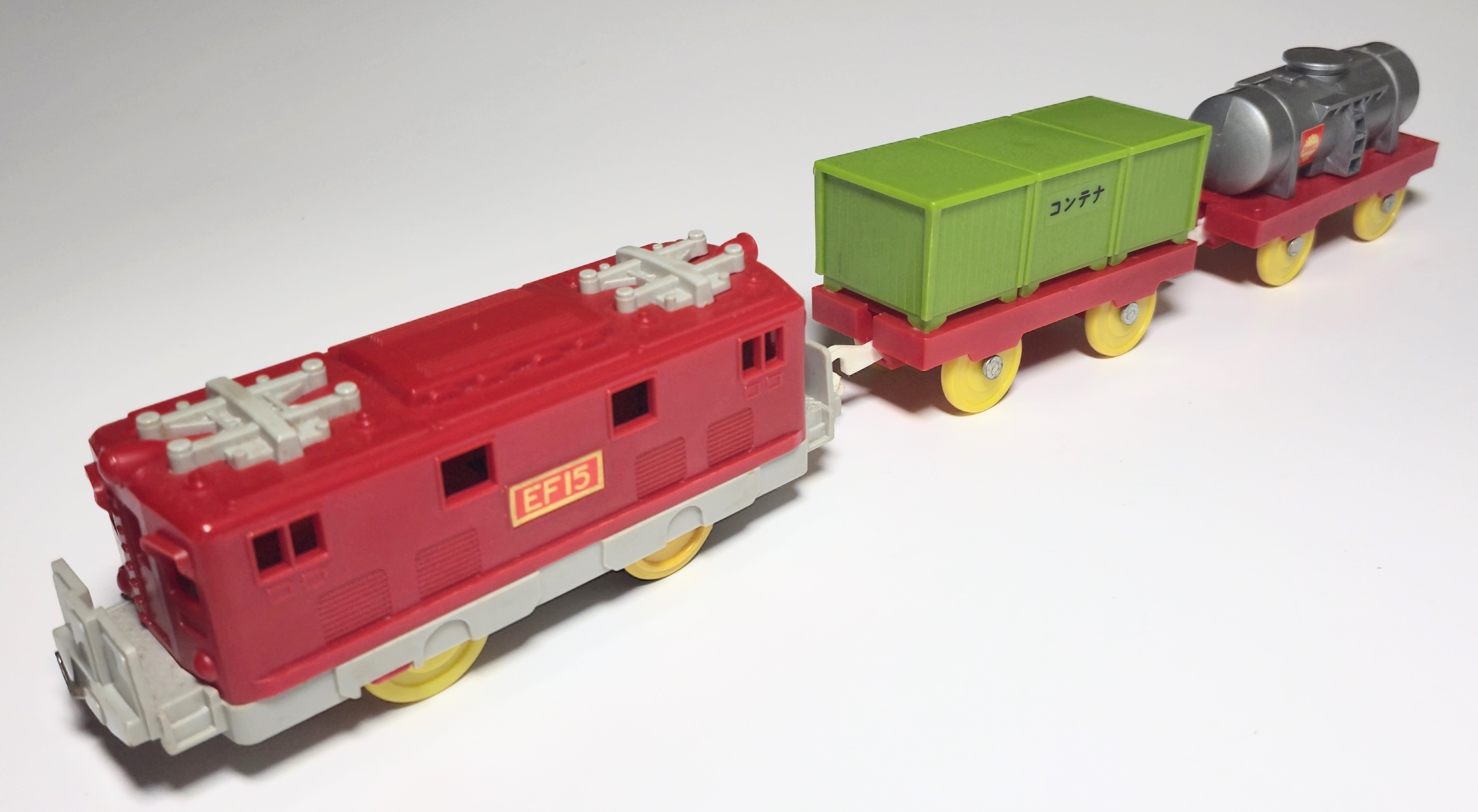
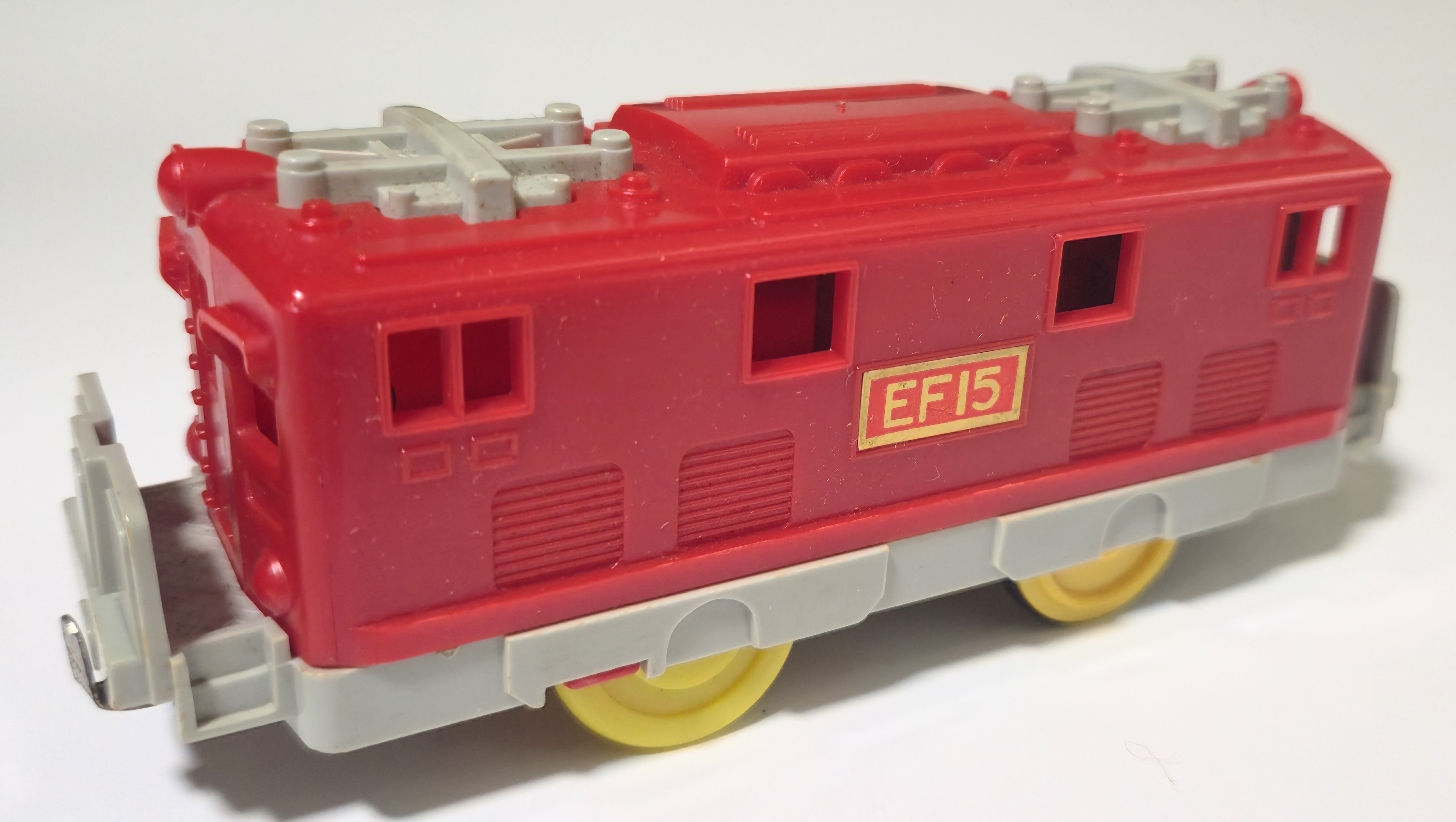
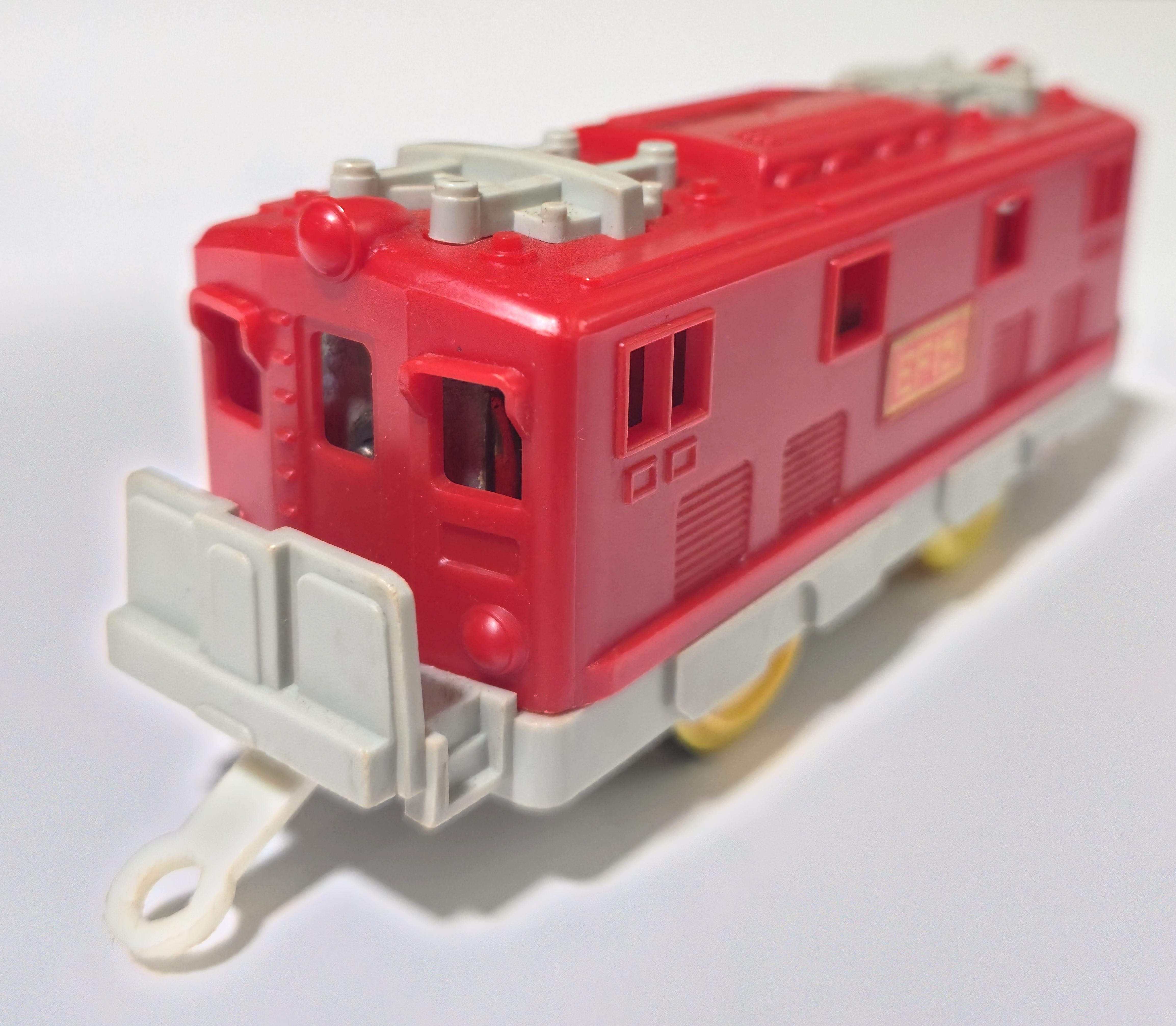
The original type from 1970 and 1971 or so had a grey chassis and pantographs. These are the oldest production EF-15s, and have a rectangular window in the rear door - this area was changed a few times in the tooling as time went on.
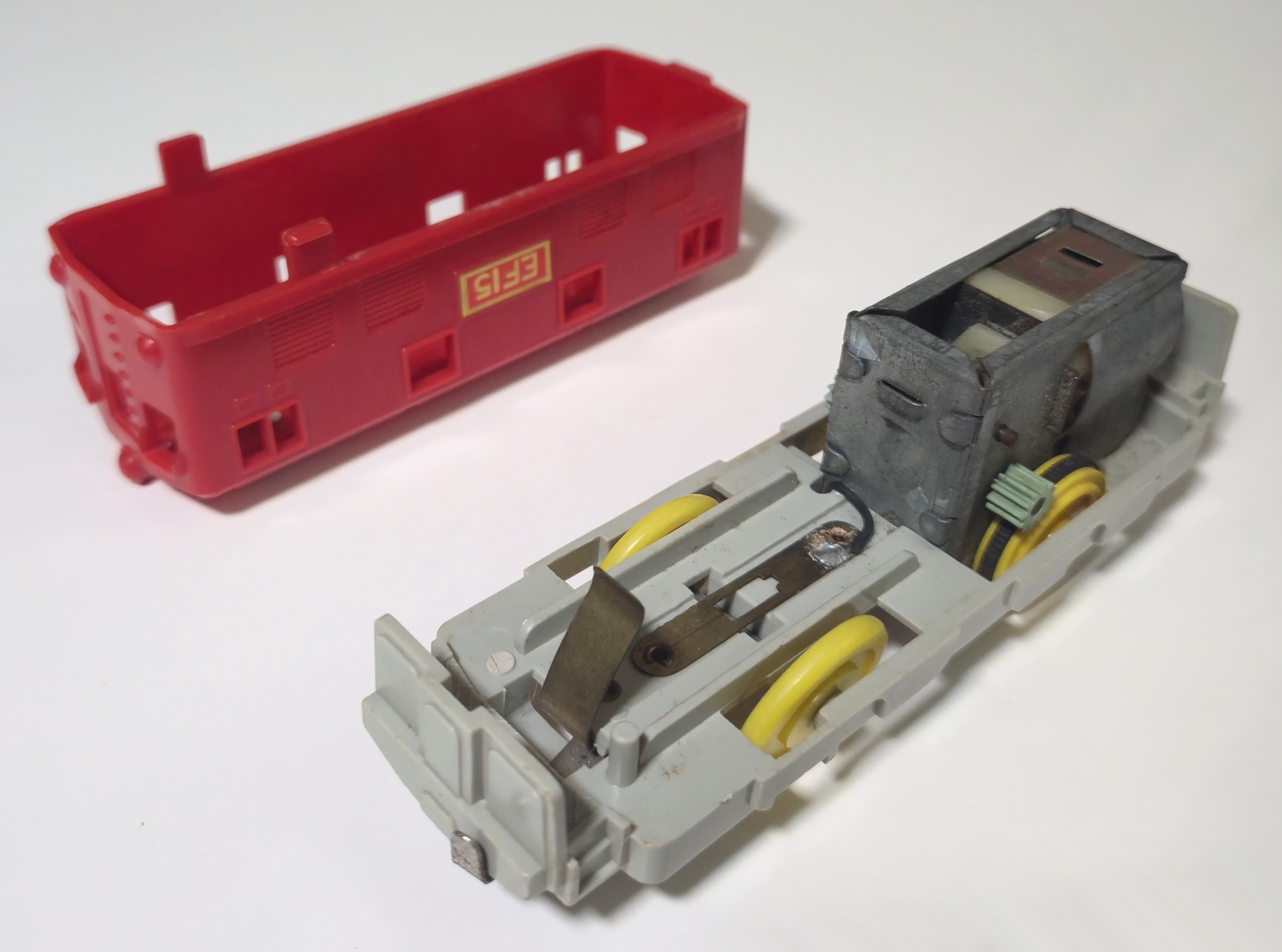
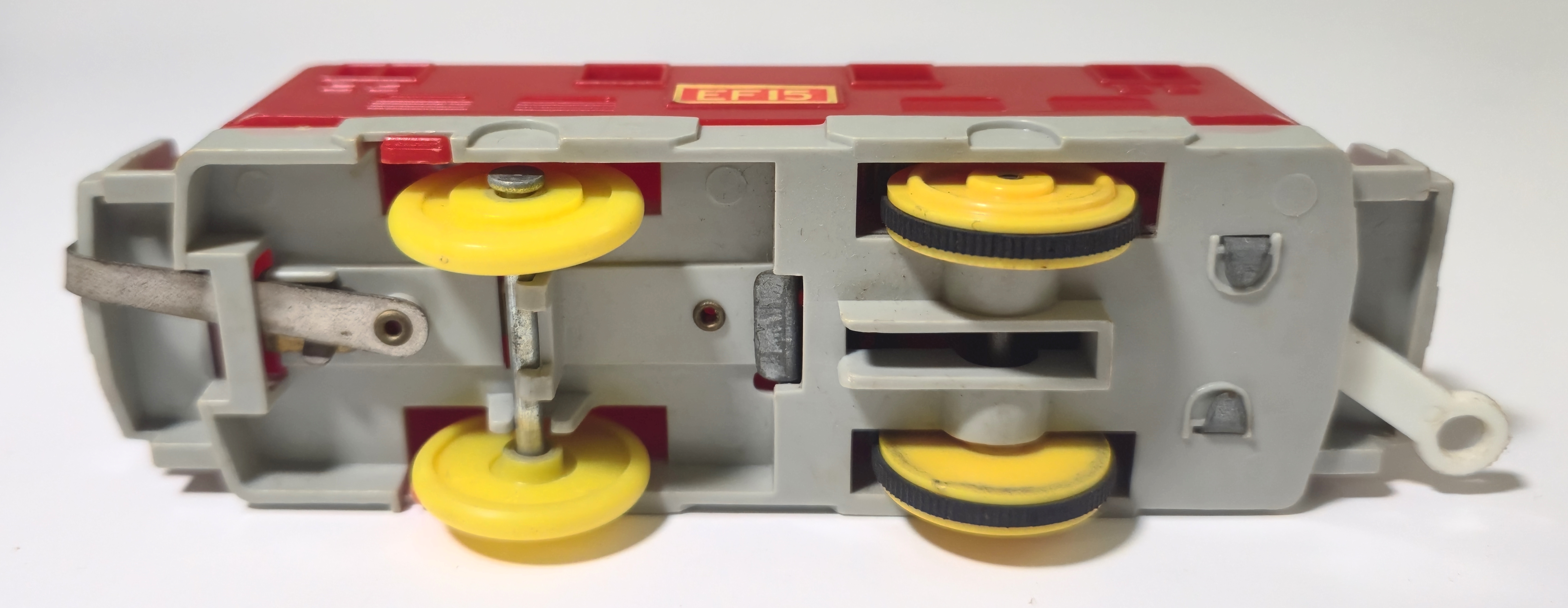
The chassis uses the metal old-power gearbox and is of the age to have plastic gears on the output axle of the gearbox that drive against the rear wheels.
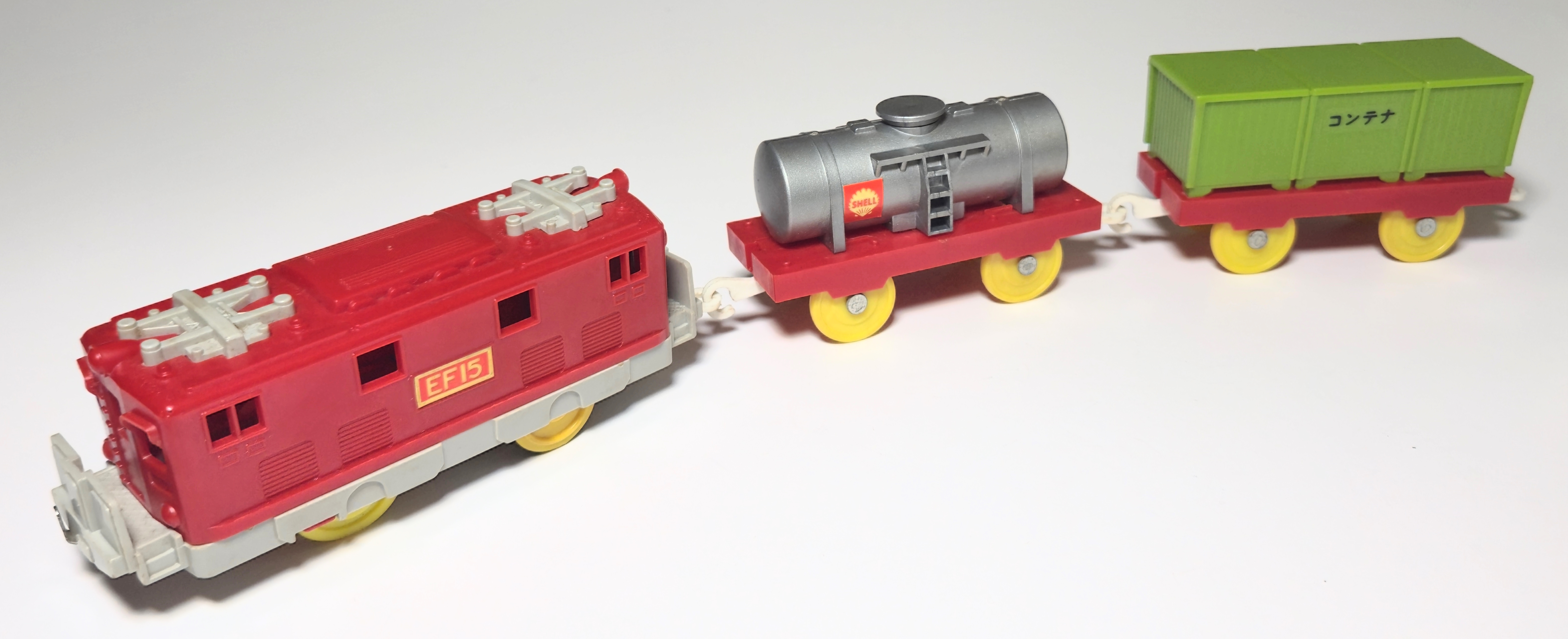
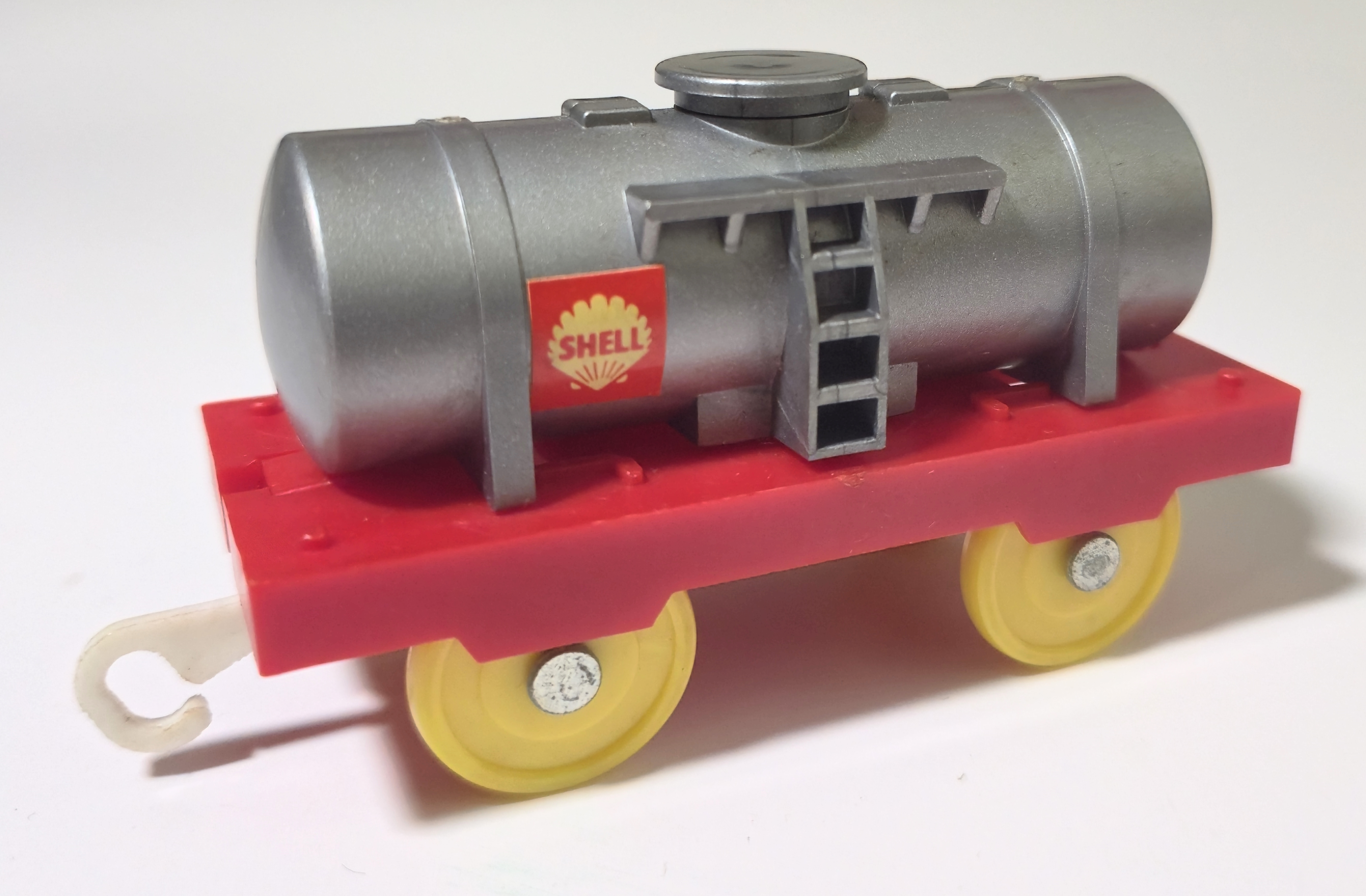
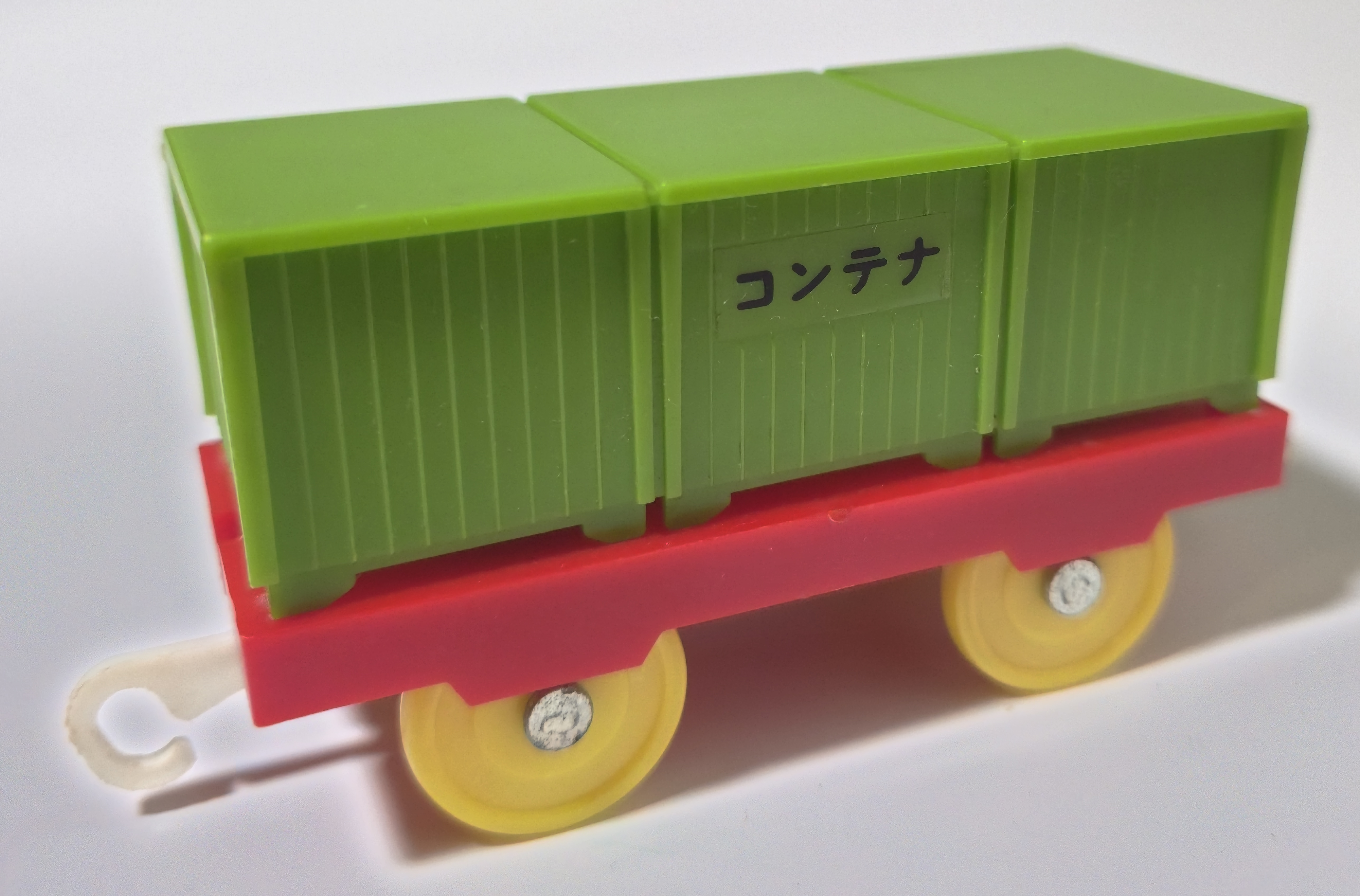
The rolling stock for these grey EF-15s are the earlier red-chassis tank car and container car.
Electric Locomotive (1972)
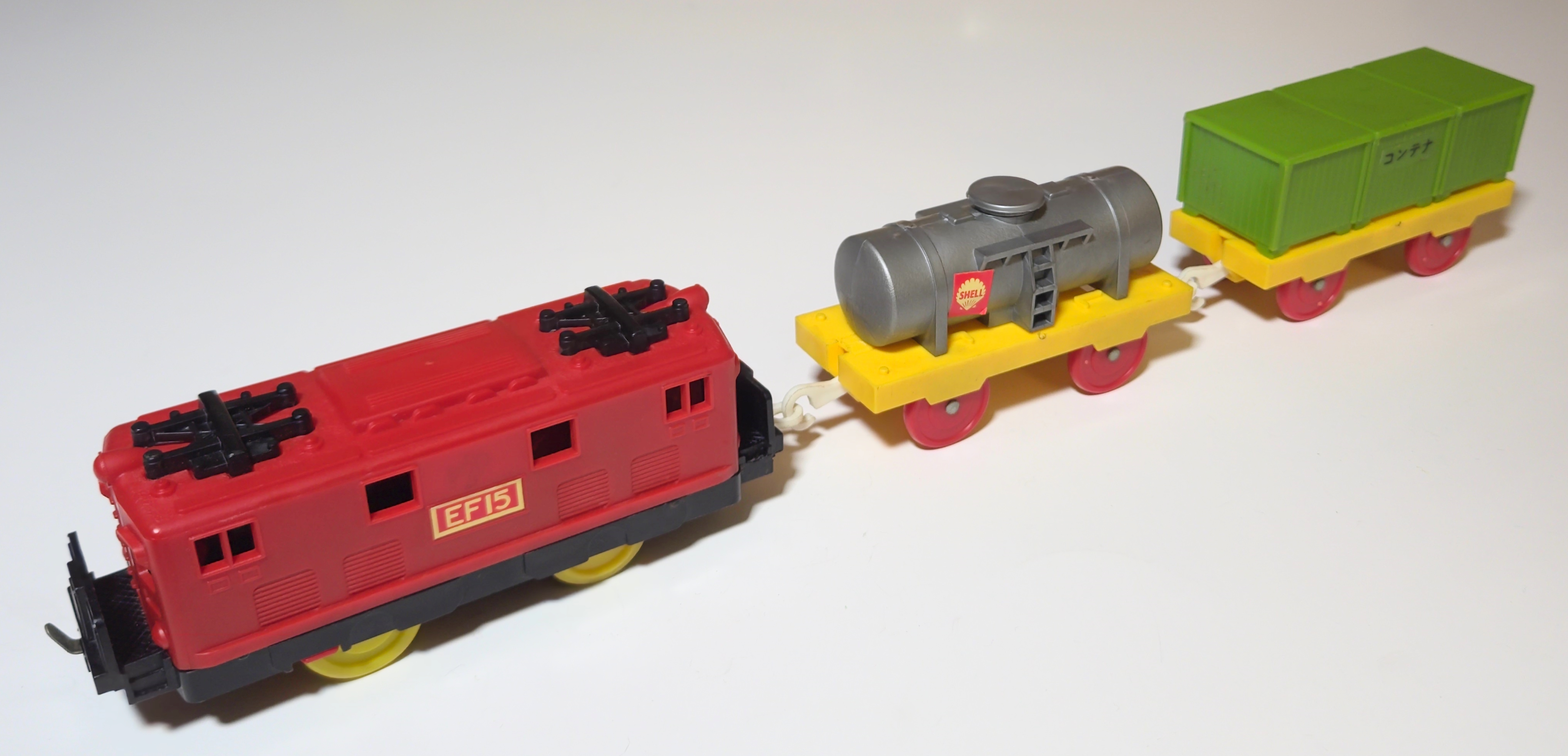
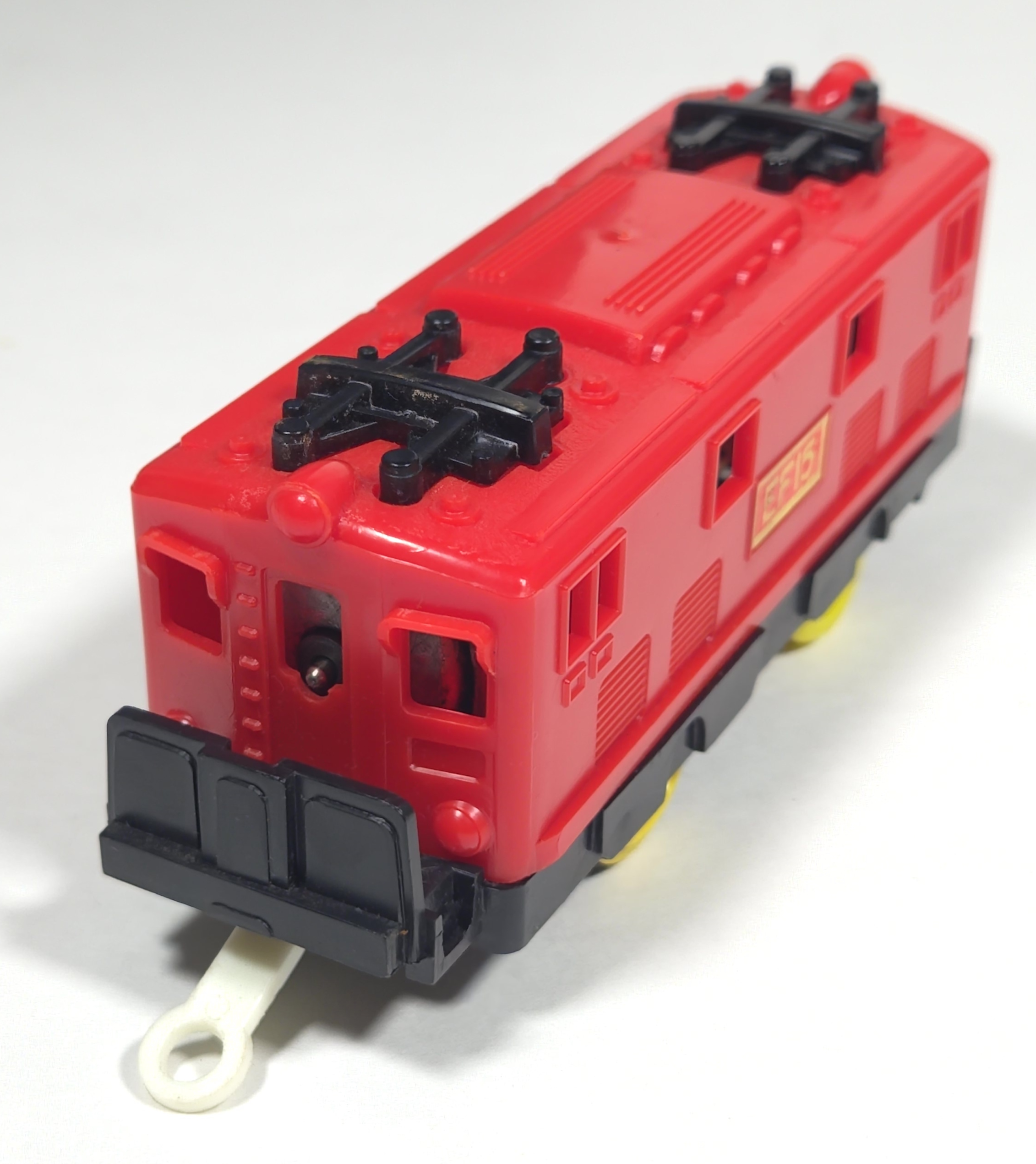
Around 1972 the EF-15 was updated to use black plastic, perhaps to consolidate the different colors that Tomy was producing for different products. A rounded cutout was added to the rear door's window to accommodate the motor shaft better. The color changes seem to have happened slightly after the ST mark appeared on boxes - the Plarail Museum has a grey-chassis train in an individual release box with an early ST mark, with black-chassis trains appearing in copies of the Electric Locomotive Set that have the 1972 sticker celebrating 100 years of railways in Japan on the box.
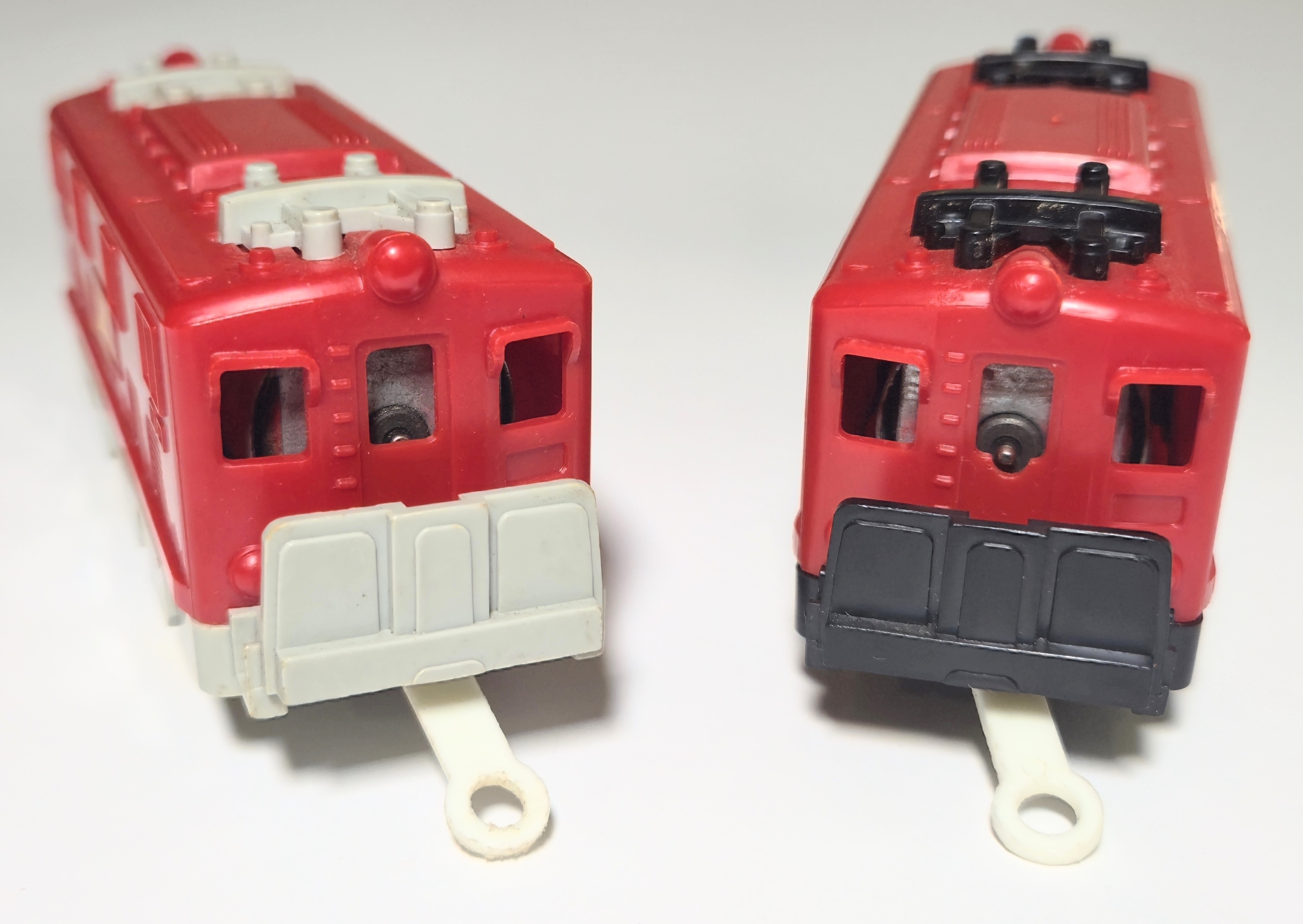

Another change to the tooling was the addition of the Tomy logo and made in Japan marks on the bottom of the chassis, which were not present on the original grey chassis. These early examples from 1972-1973 still use the older, thinner style of black tires. Actually, it seems that the molding around the steps on the sides of the chassis became rougher and less consistent during this time, and the stairwell often has a rounded bottom rim or has the bottom few steps walled in.
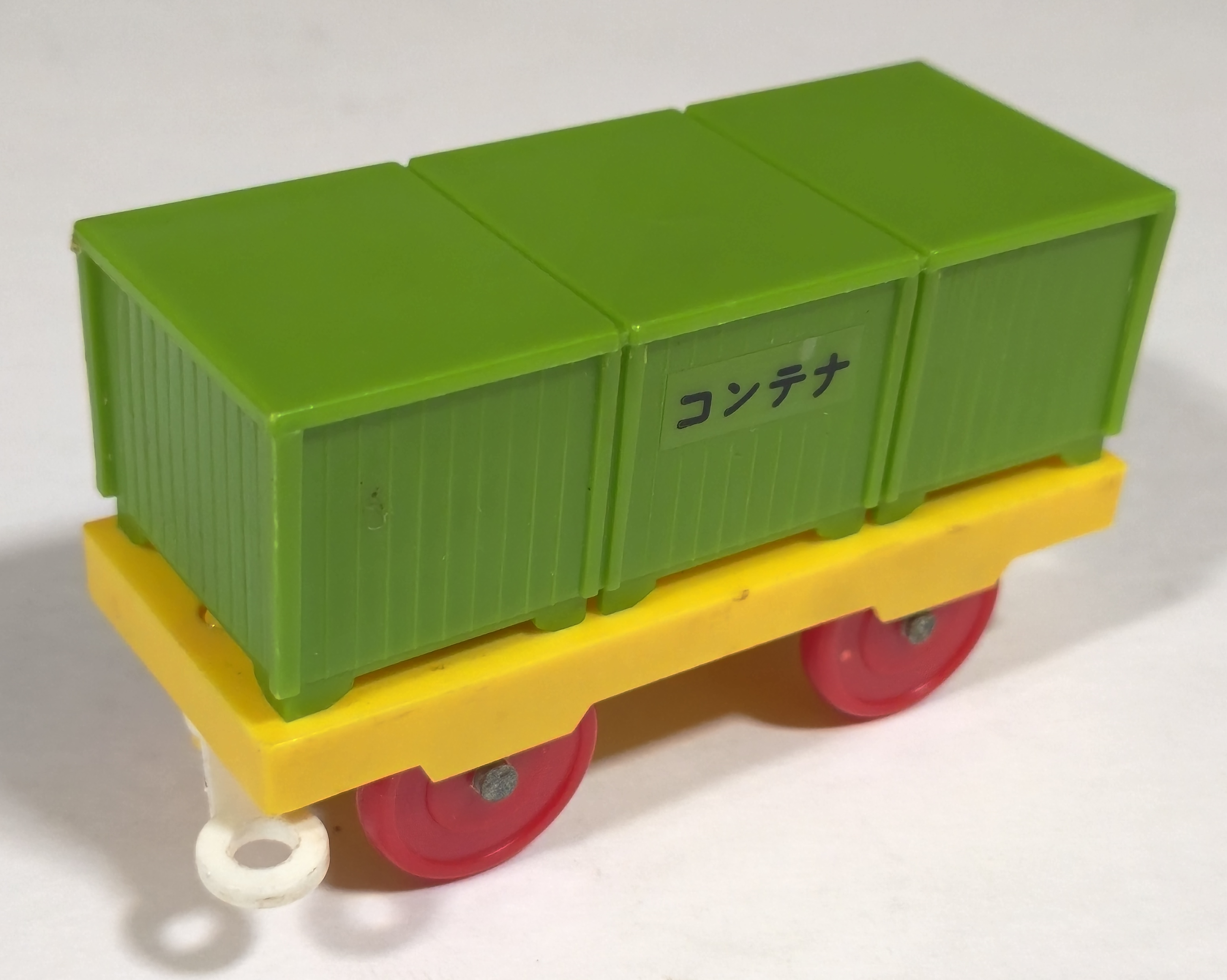

The freight cars changed to the more familiar and longer-lasting style, although they are the earliest type that still used the older chassis tooling without additional axlebox details that better cover the wheel's axles as well as plastic rear coupler plugs and the more silvery tanker with square Shell logo sticker.
EF-15 Electric Locomotive (1974)
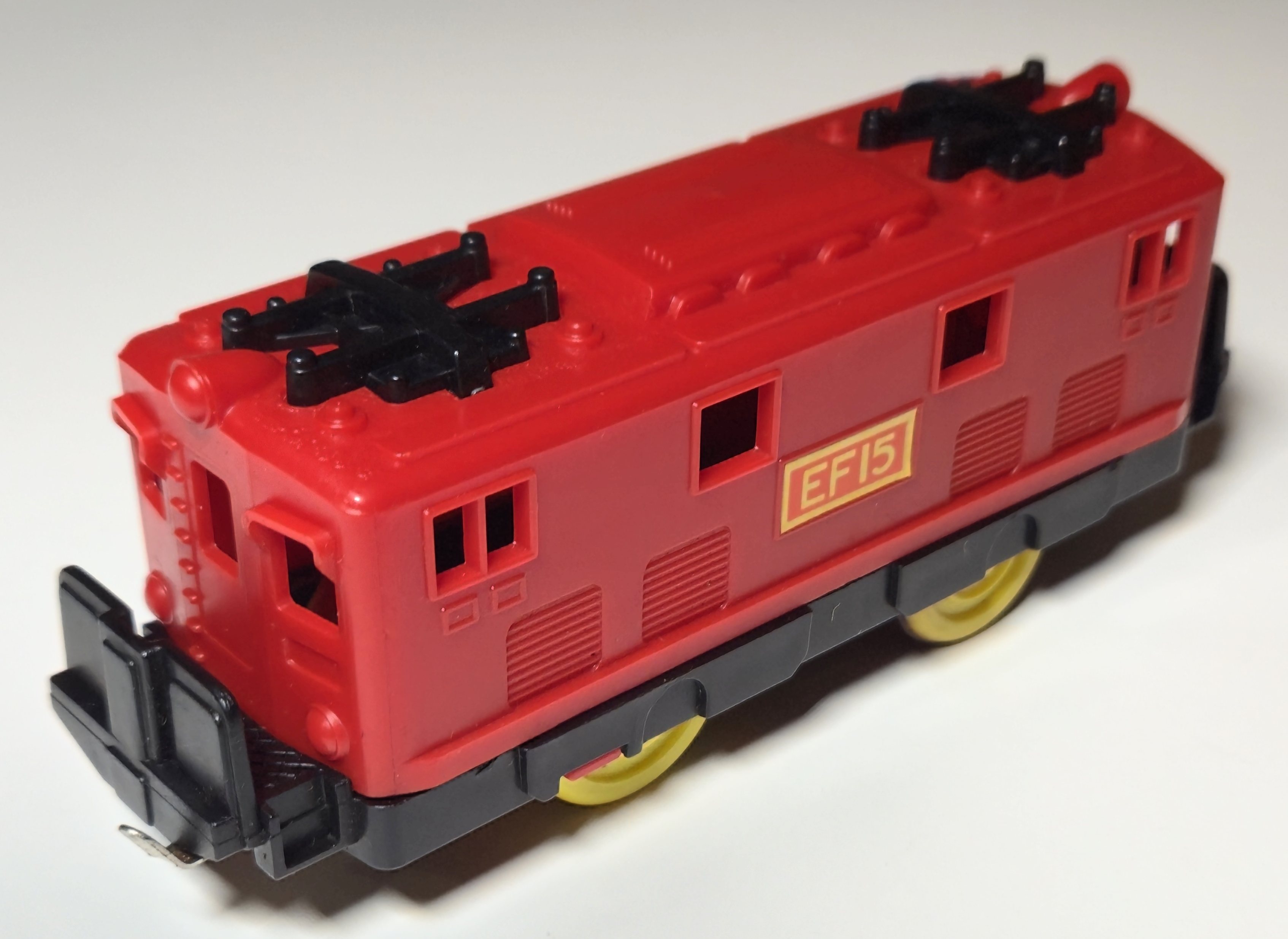
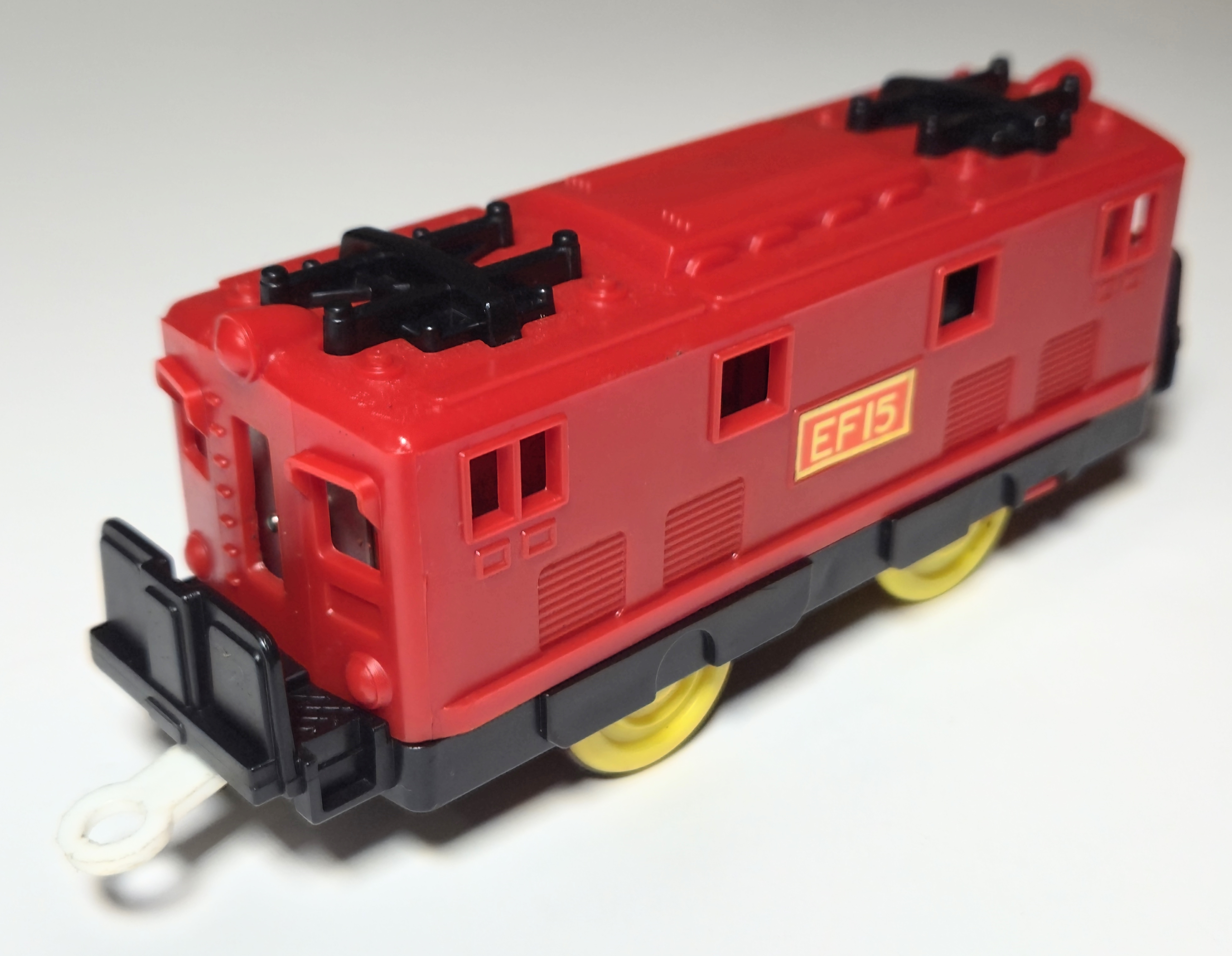
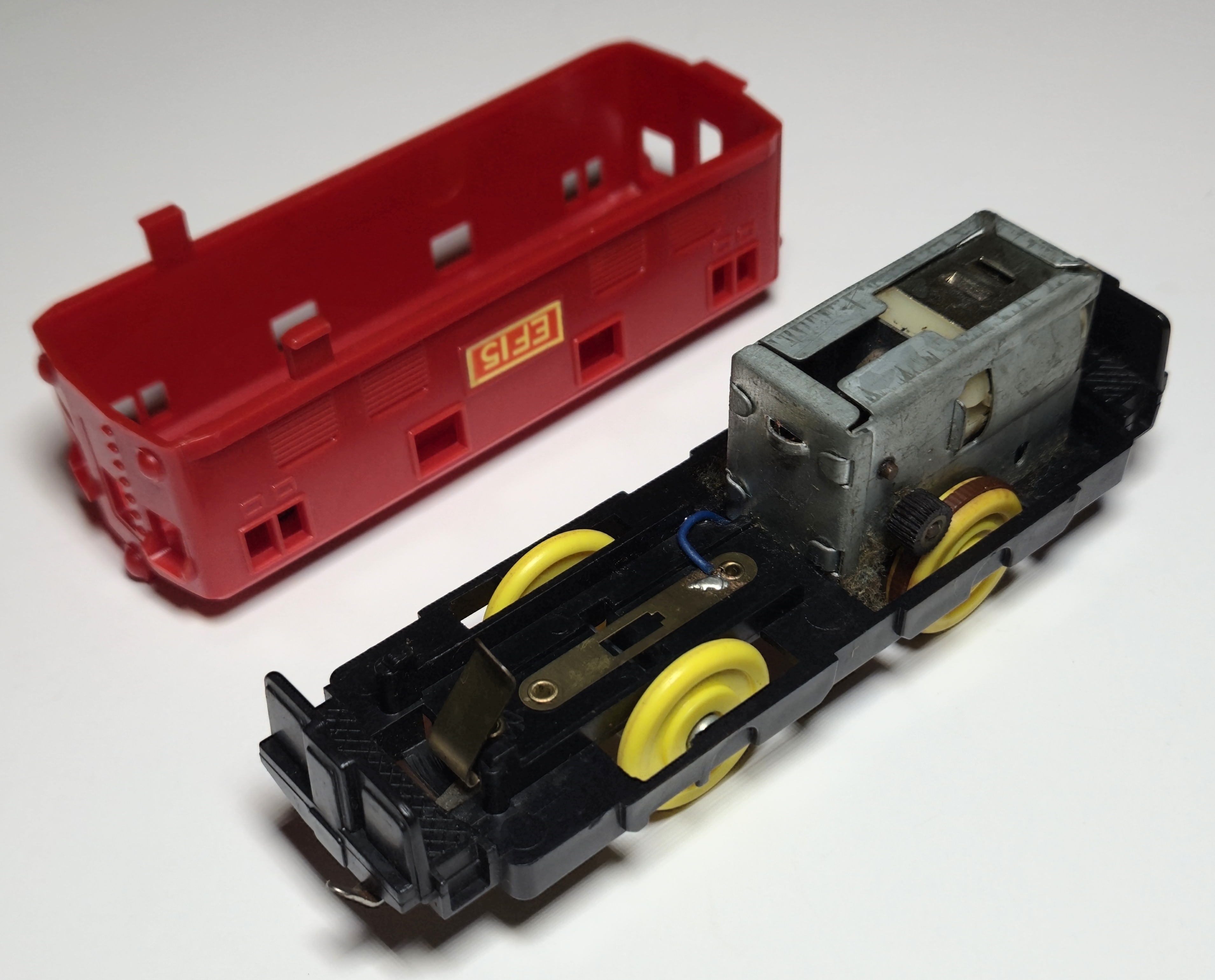
The EF-15 was rereleased in the third generation of lift-top box as the EF-15 Electric Locomotive to differentiate it from new trains like the EF-58 Electric Locomotive and ED-70 Electric Locomotive. In addition to red, yellow and green EF-15s also appeared through to the end of the 1970s when it was dropped from the regular individual releases. The red EF-15 also appeared in the EF-15 Electric Locomotive Overpass Panorama Set beginning in 1974.
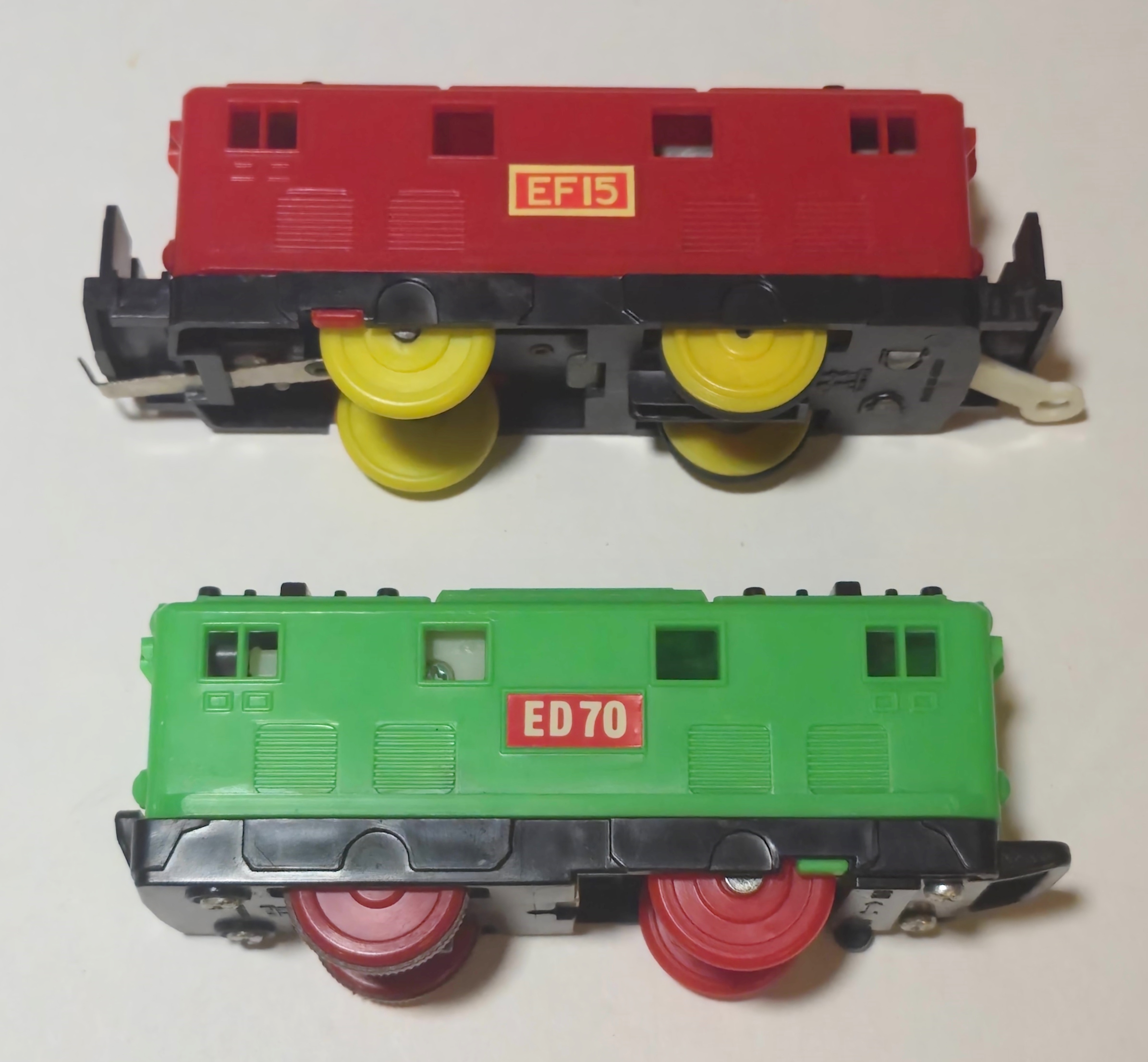
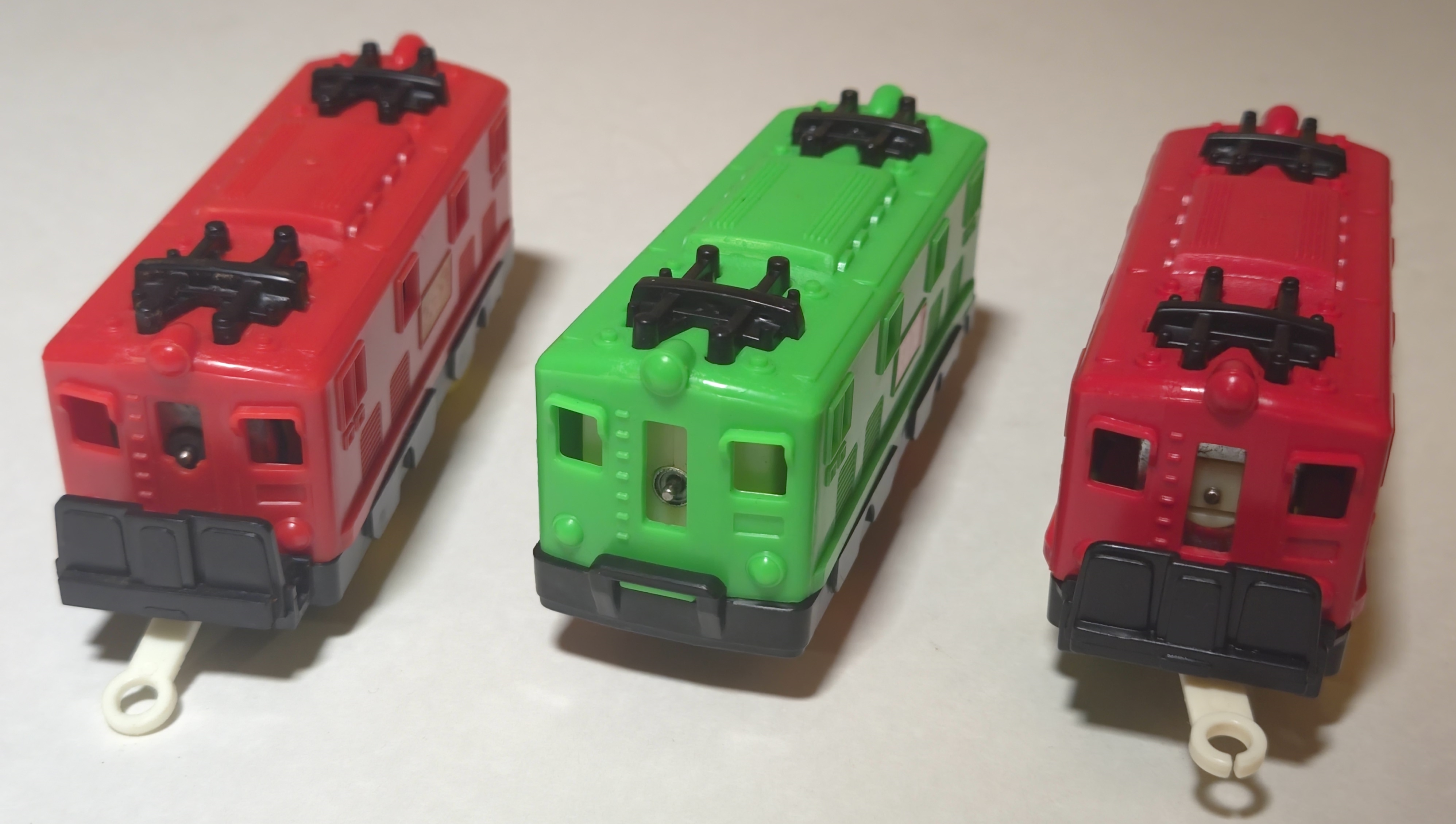
I suspect these colors were available because they also crossed over with Round-Trip ED-70 production, which began using the same body shell as the EF-15 but with a new reversing chassis in 1975. By the era of these releases the rear window had been modified again to be taller to stay out of the way of the motor shaft, in particular because the ED-70's seems to be lower and stick out further.
Lit EF-15 (Container Loading and Unloading Set) (1980)
In 1980 an EF-15 with headlight appeared in the Container Loading and Unloading Set. It had a grey chassis and pantographs similar to the originals but with added contact strips and a bulb in the body shell like the Hikari with Light and D-51 with Light around the same time.
EF-15 Electric Locomotive (Electric Locomotive Overpass Set) (1981)

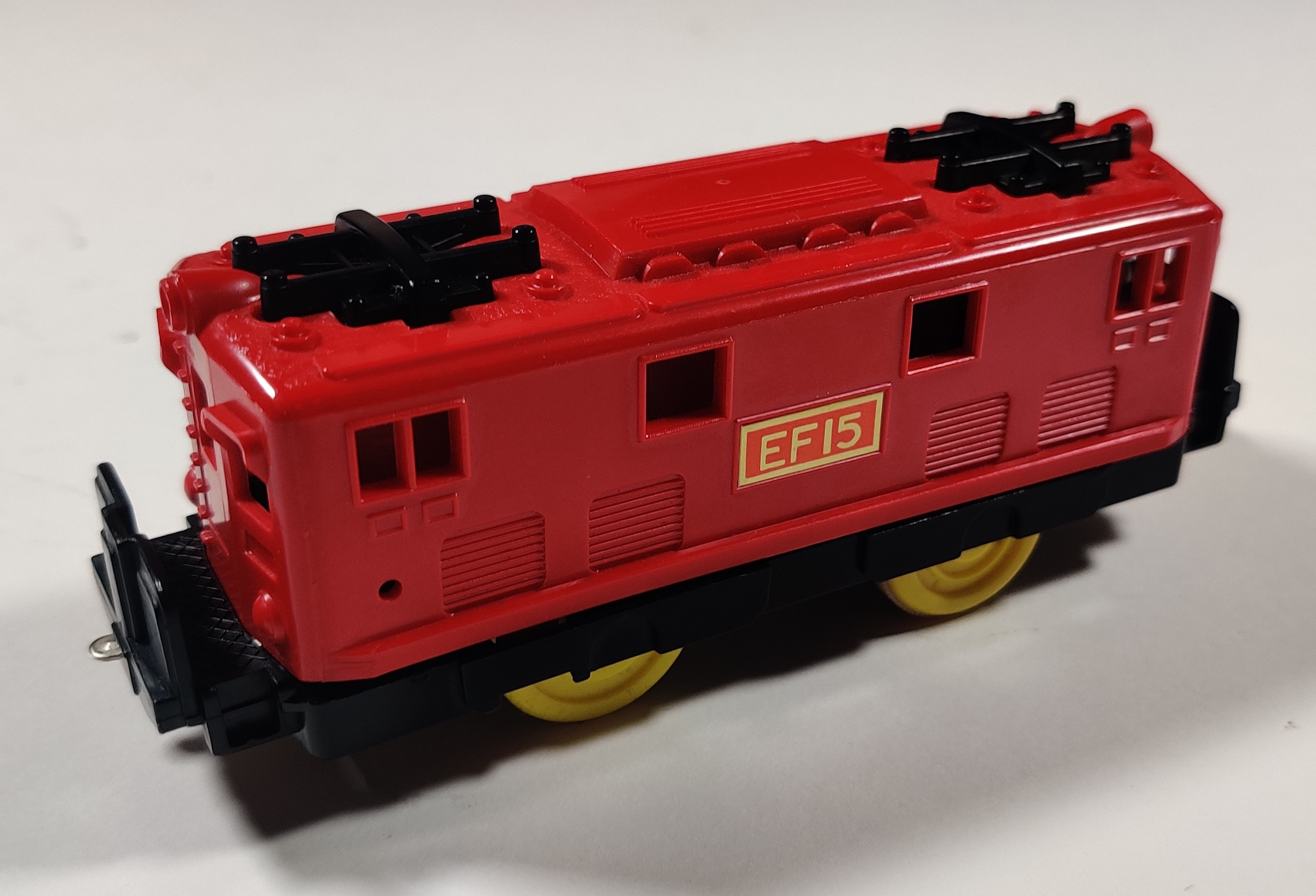
In 1981 the EF-15 Electric Locomotive Overpass Panorama Set was updated and rereleased as the Electric Locomotive Overpass Set with EF-15s based on the lit type with changes to the tooling but without the light feature.
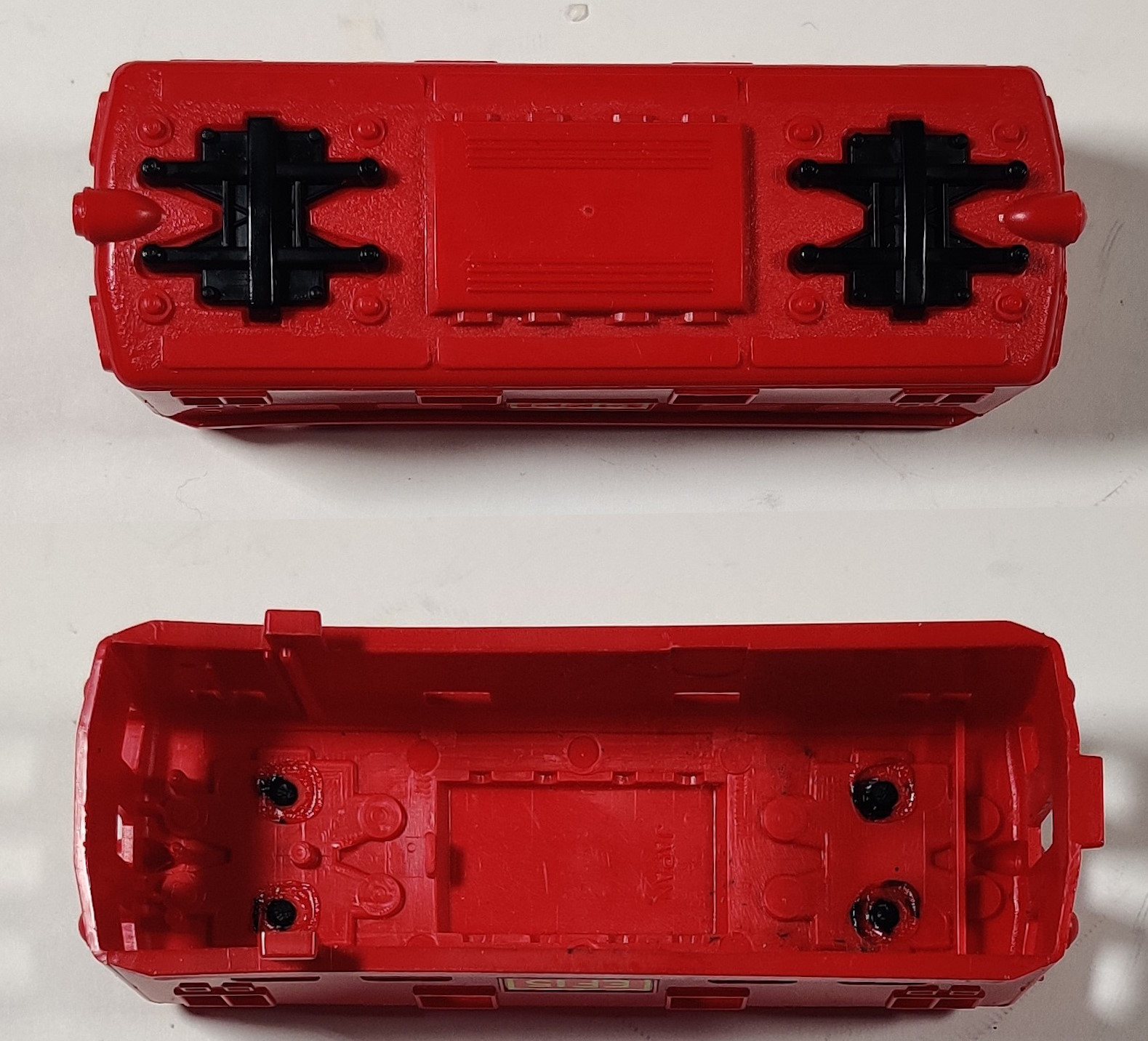

Early examples used up the leftover grey chassis components from the lit version but most of these EF-15s were black. The body shell has the holes in the headlight and for the rivets that held the contact strips in, and the chassis also carries forward the modifications for the additional electrical strips. Unlike the DD-51 with a similar chassis that was eventually updated to use the plastic old-power gearbox, the EF-15 continued to use a metal one.
This set was discontinued with the move to new power in 1987, and the EF-15 disappeared from the range for many years...
EF15 Electric Locomotive (2001)



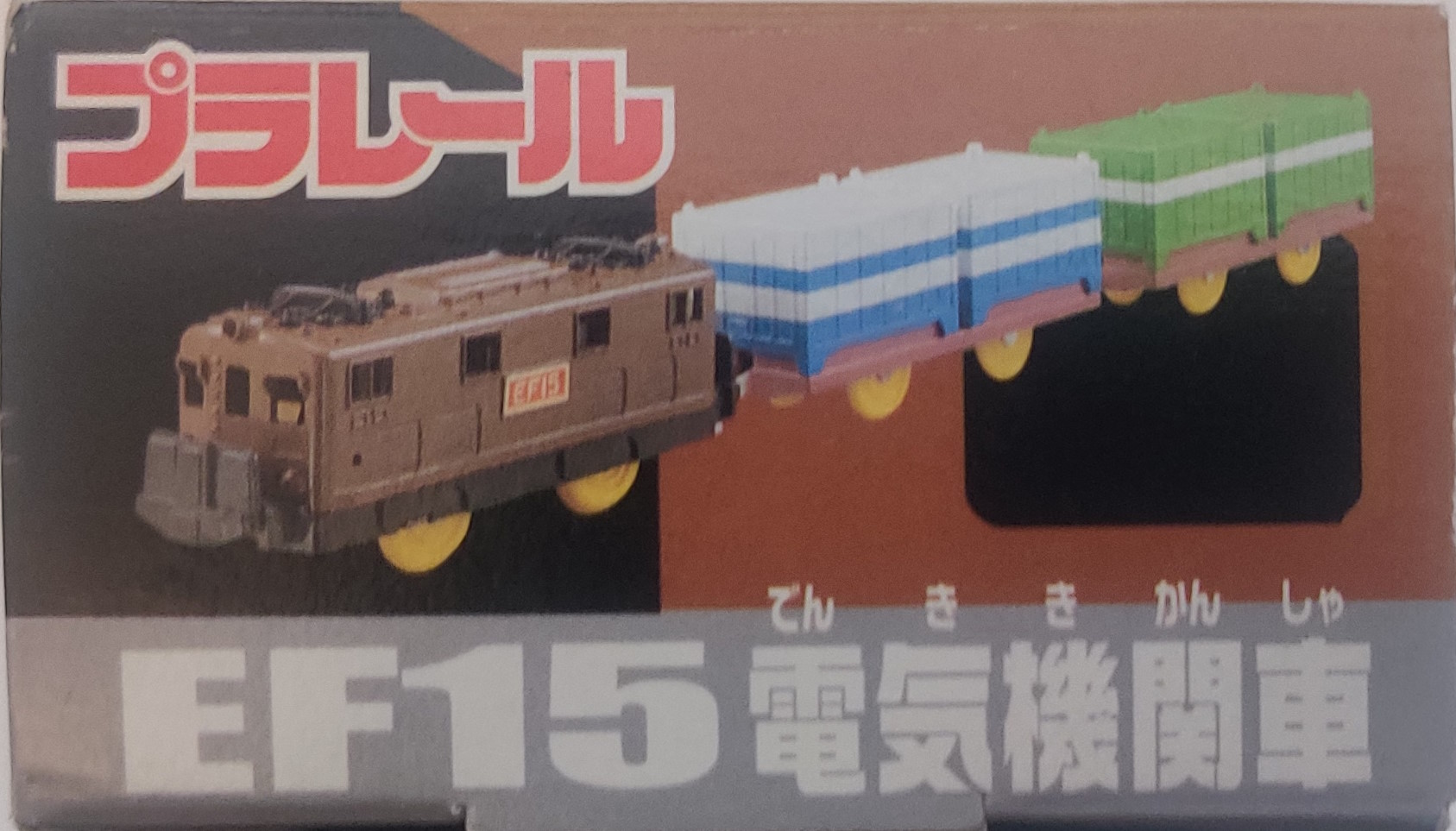


On November first, 2001 a new EF15 was released as the EF15 Electric Locomotive in the short-lived eighth generation packaging along with two of the container flatbeds with containers. The locomotive is based on the old old-power toolings - the chassis even still has the contact strip modifications, in addition to the body shell retaining the rivet holes.
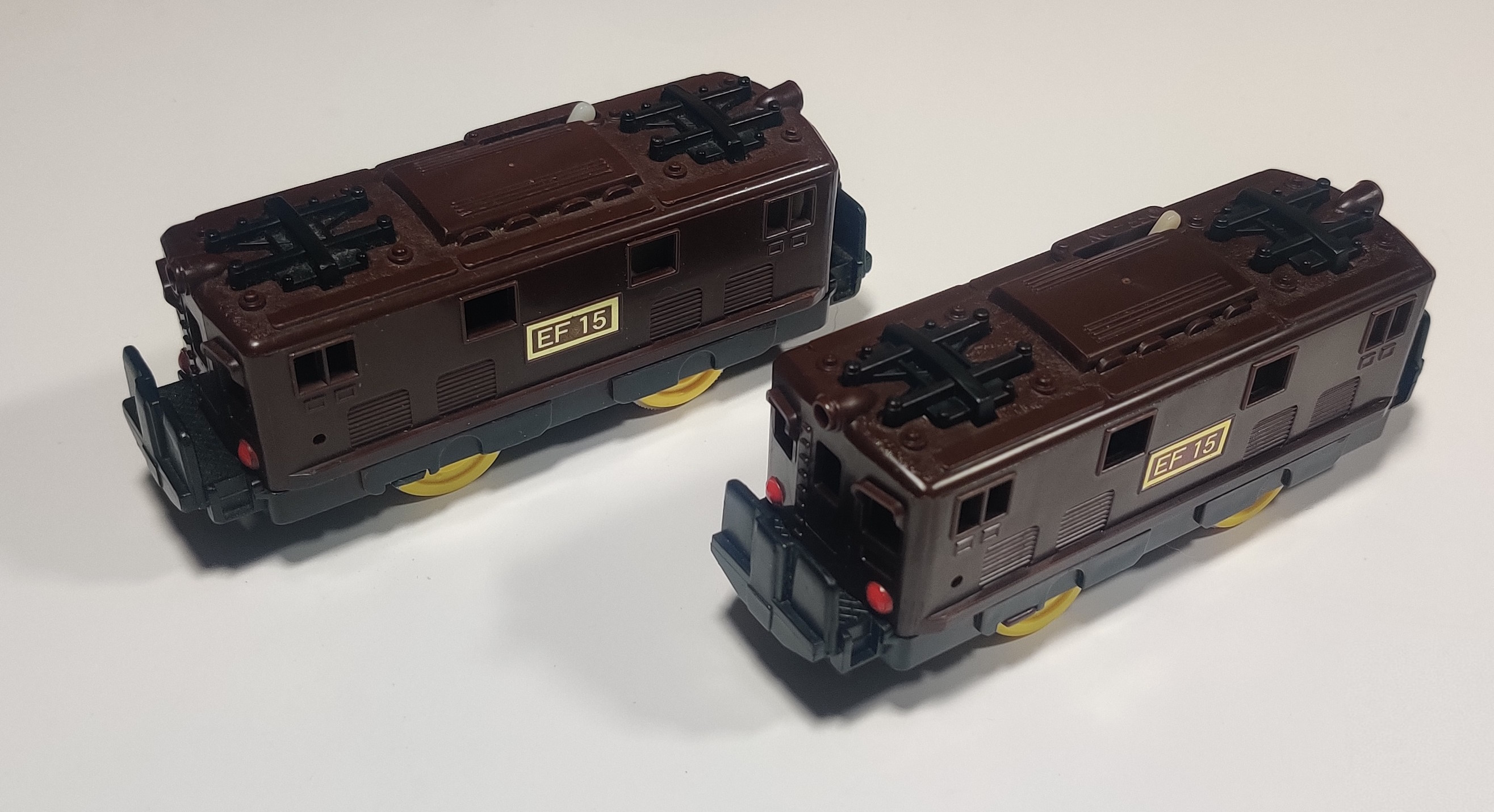

This EF15 is powered by the regular single-speed new power gearbox. I have two examples, the boxed 8th generation example primarily documented here was built in October 2001 while a second engine found separately was produced in December 2003 and would have come in 9th generation packaging as S-27 EF15 Electric Locomotive. It seems both earlier and later releases used the version of the new power gearbox with a clip covering the motor terminals which has been removed from my later example.

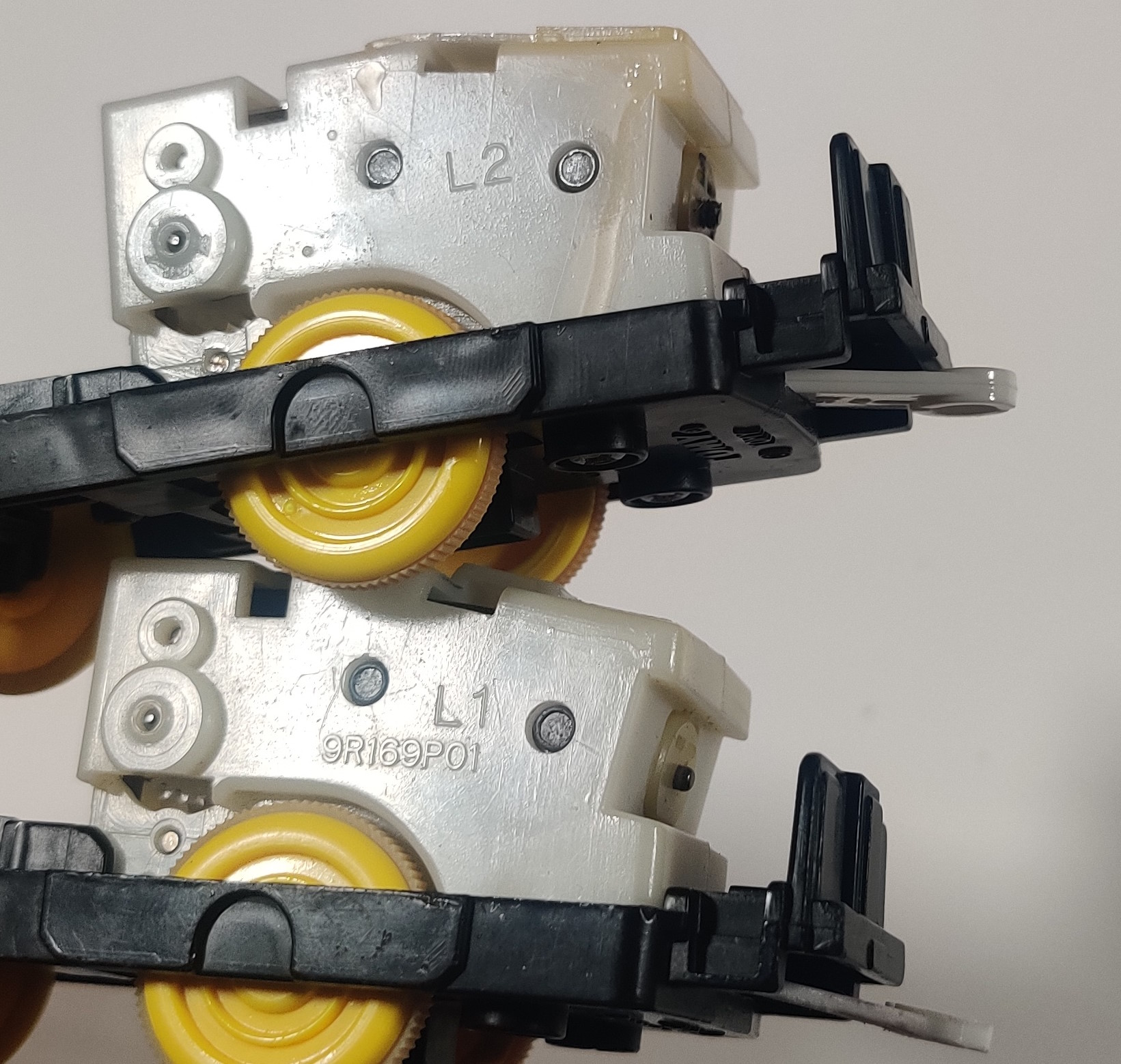
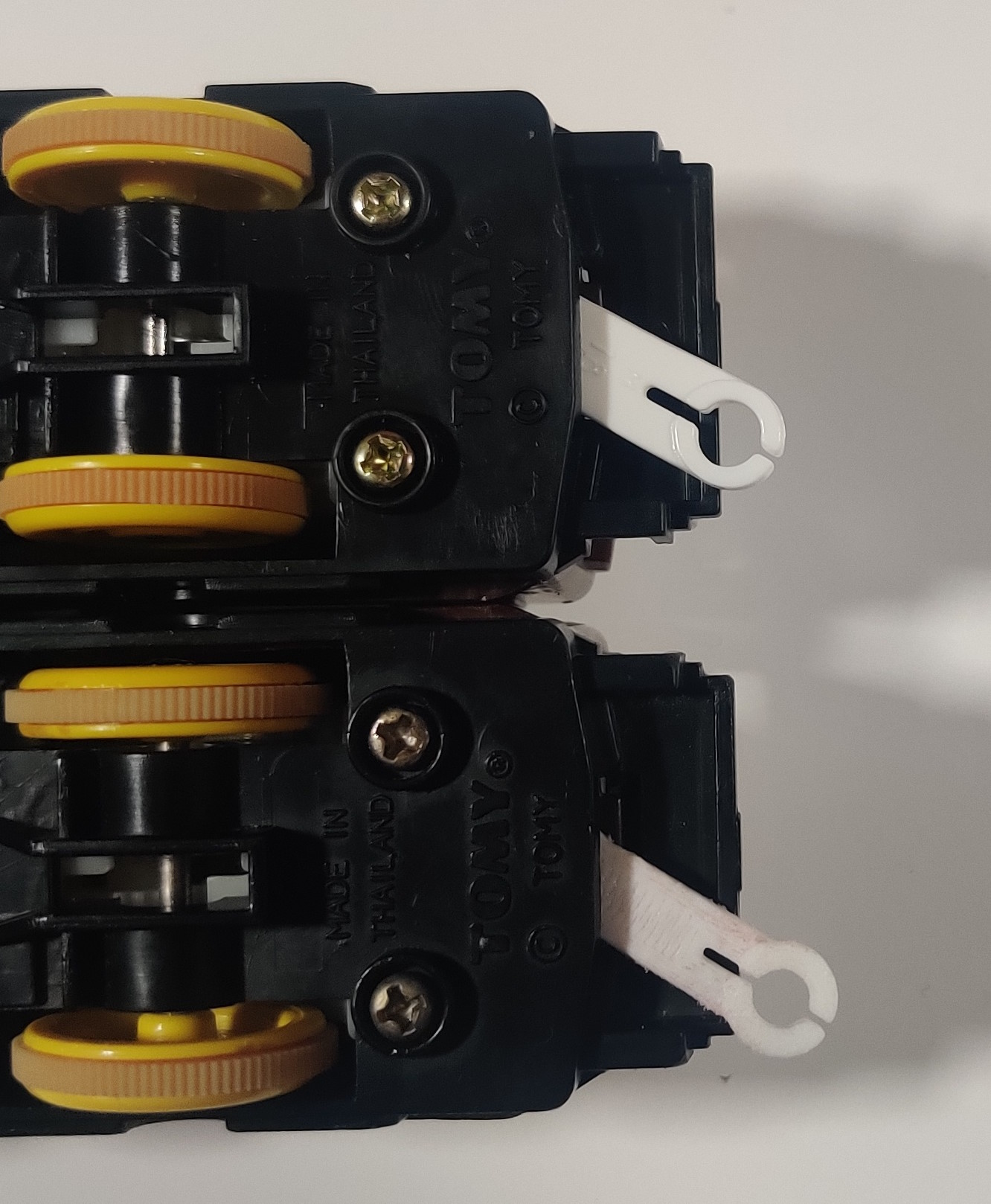
The EF15 chassis has been updated with the new squared-off Tomy logo. By 2003 the new power gearbox molding had been updated to include additional production codes. I thought that this locomotive would have used the longer coupler that the D51 and DD51 used, and installed a 3D printed replacement on my second unit which did not have any rear coupler when I bought it, but it actually uses the standard one. You can see where a little bit of the coupling ring does intersect with the body molding when to one side, but I don't think this would really effect running. I also had to replace one of the body clips on my later EF15 shell - the file for the 3D-printed clip I made can be found on the Plarail resources page (as well as the 3D printable long coupling).
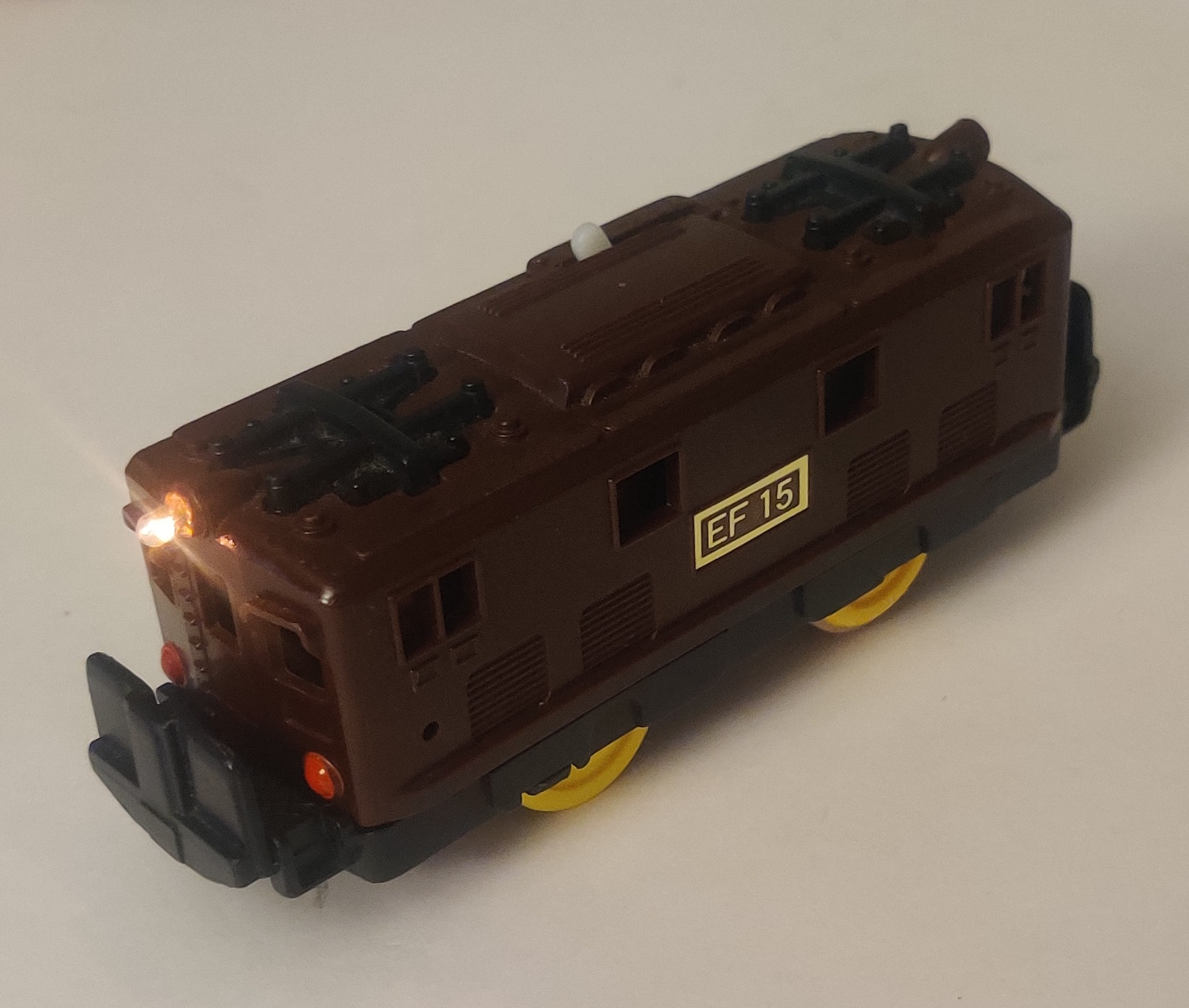
I actually did end up fitting the loose newer EF15 I have with a functioning light. The details for how I decided to do it are chronicled here.

The original packaging includes styrofoam dividers between each of the cars and at either end. I am not sure if the EF15 originally came in a plastic bag but mine did not.

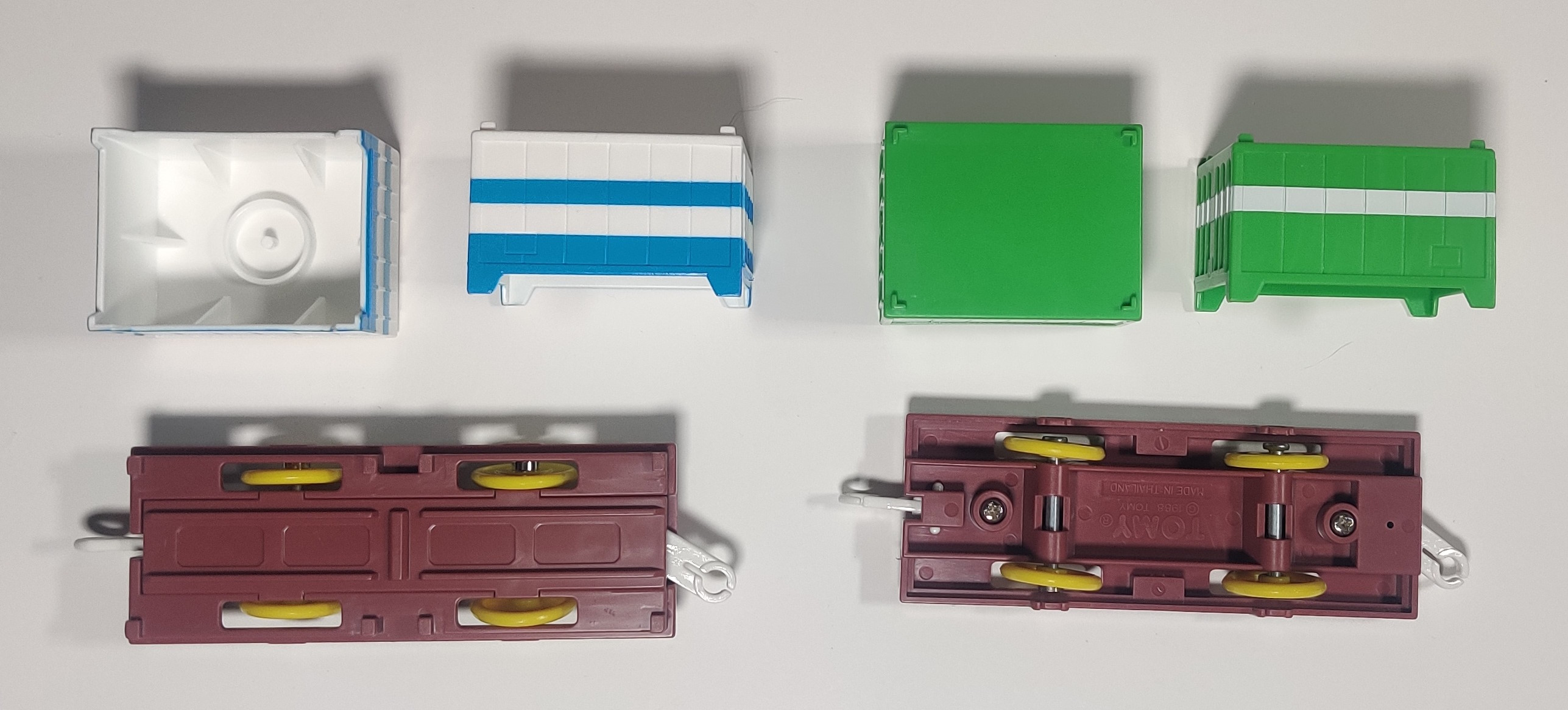
The two flatbeds are an identical brownish red and come with two pairs of basic but nice looking containers. These flatbeds originate in the late 1998 Play Wagons Set. These containers do not have the magnets installed underneath. The flatbed molding is the Thailand update of the original curvy Tomy logo original molding.
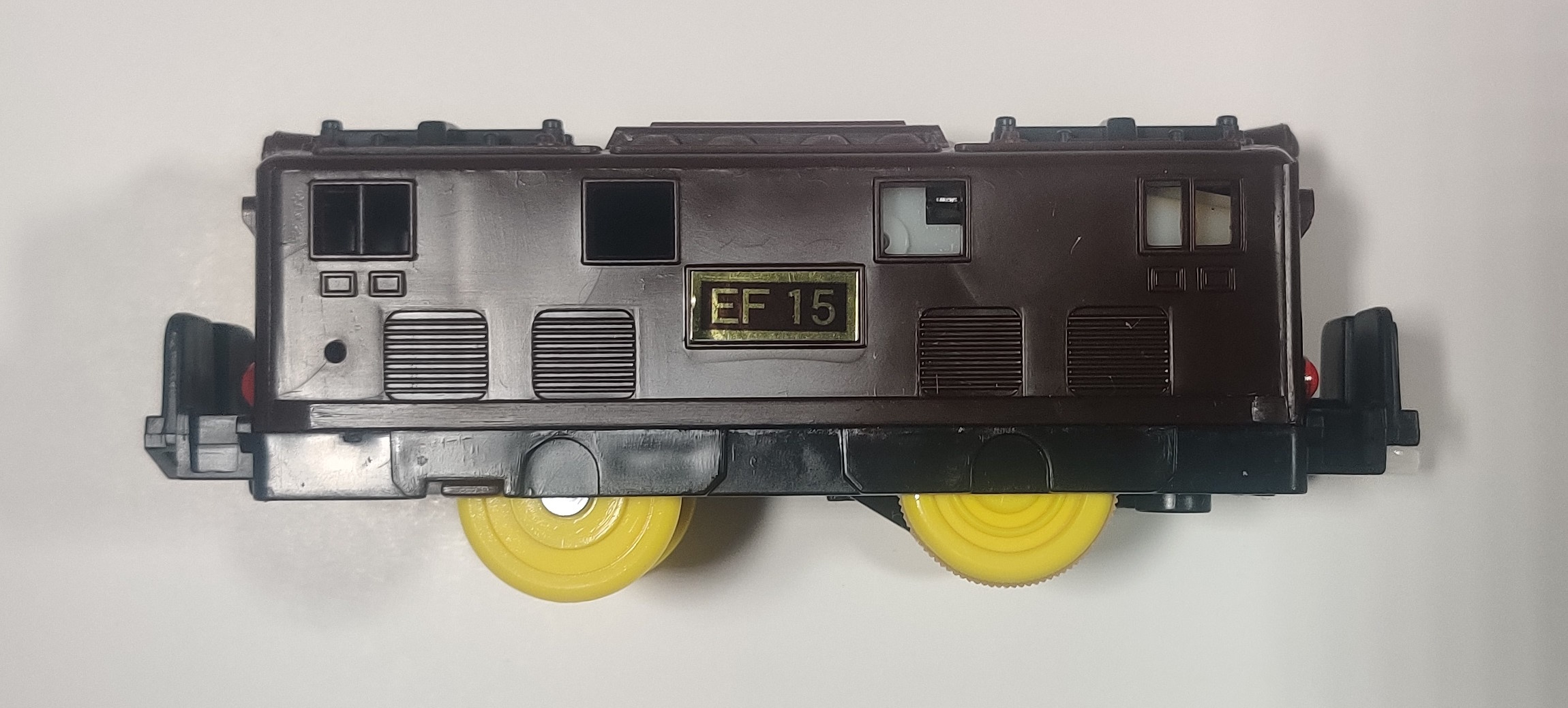
Being a rerelease of a 1970s mold the EF15 stands out somewhat next to
other models released around the same time like the
EH500 or
EF210 which were all-new
toolings, although the older molding does fit the older train (the EF-15s
had already been out of service for 15 years by 2001). This
train also uses the less realistic yellow wheels instead of the grey
wheels that many new engines were using around this time and does not
have a realistic running number, just a new version of the existing
EF15 sticker.
The EF15 Electric Locomotive was rereleased in 2002
in 9th generation packaging as S-27 EF15 Electric Locomotive. The S-27
EF-15 was retired around 2006 and was the last time a Plarail EF-15 was
produced (as of 2025).